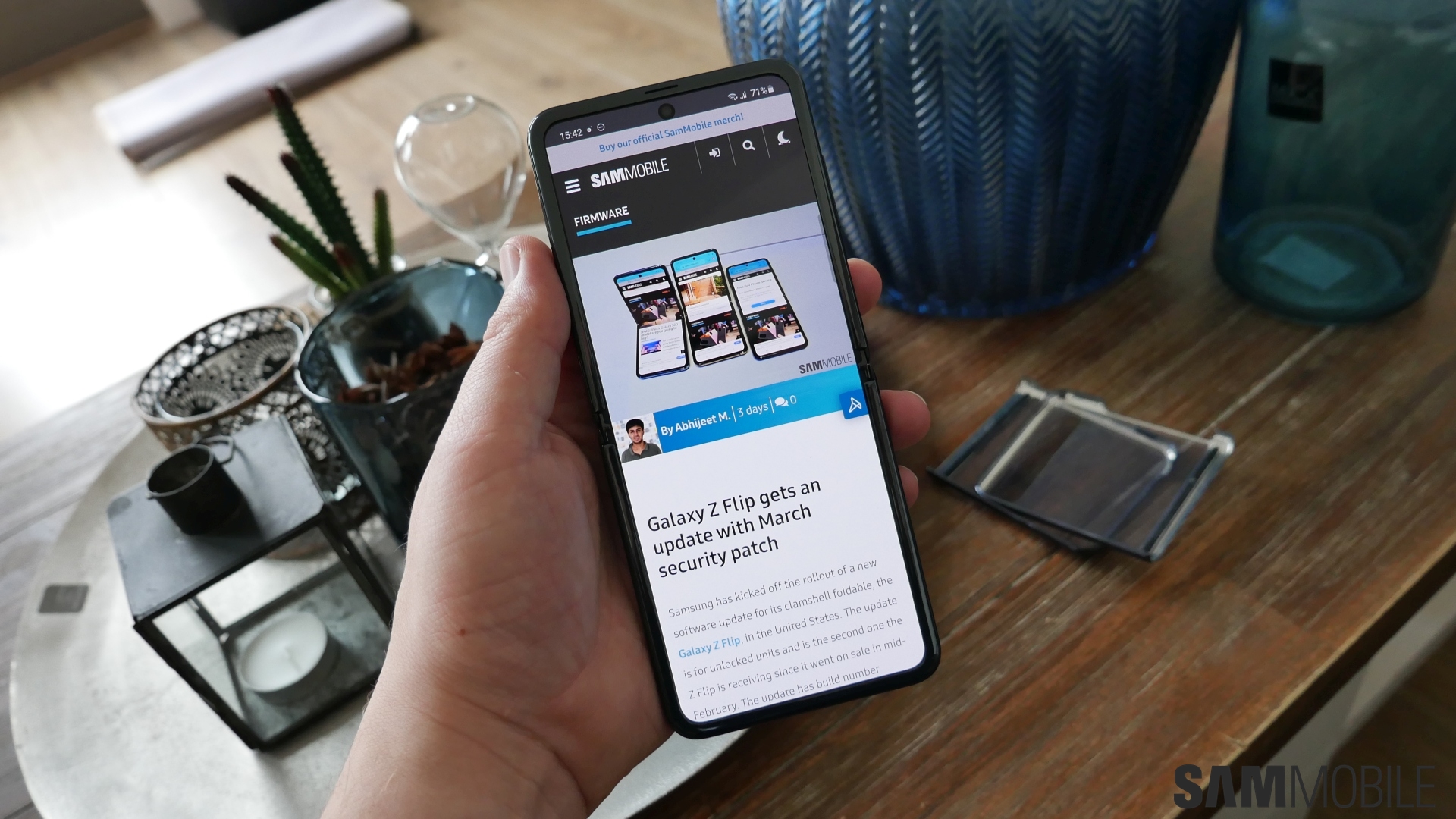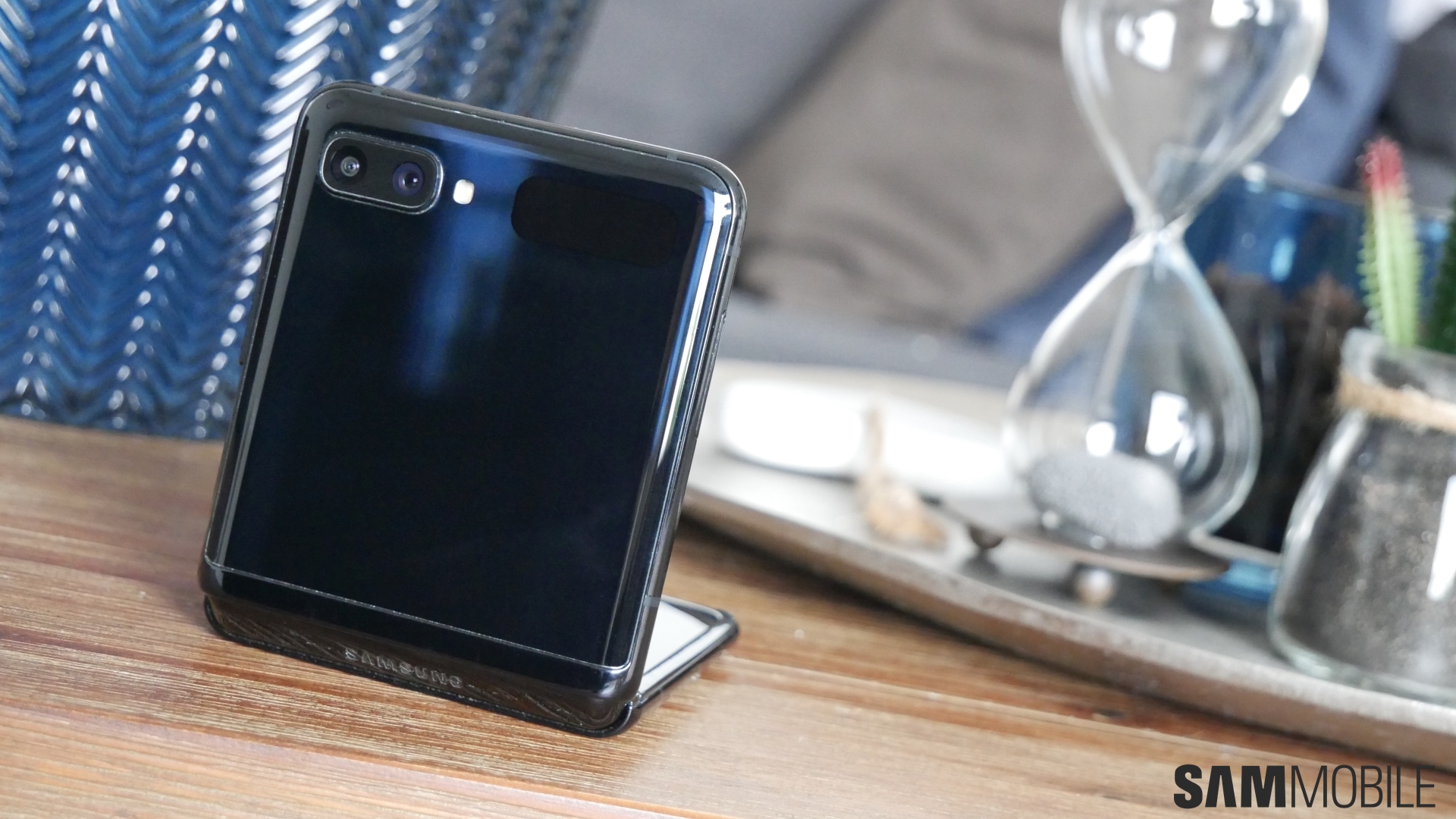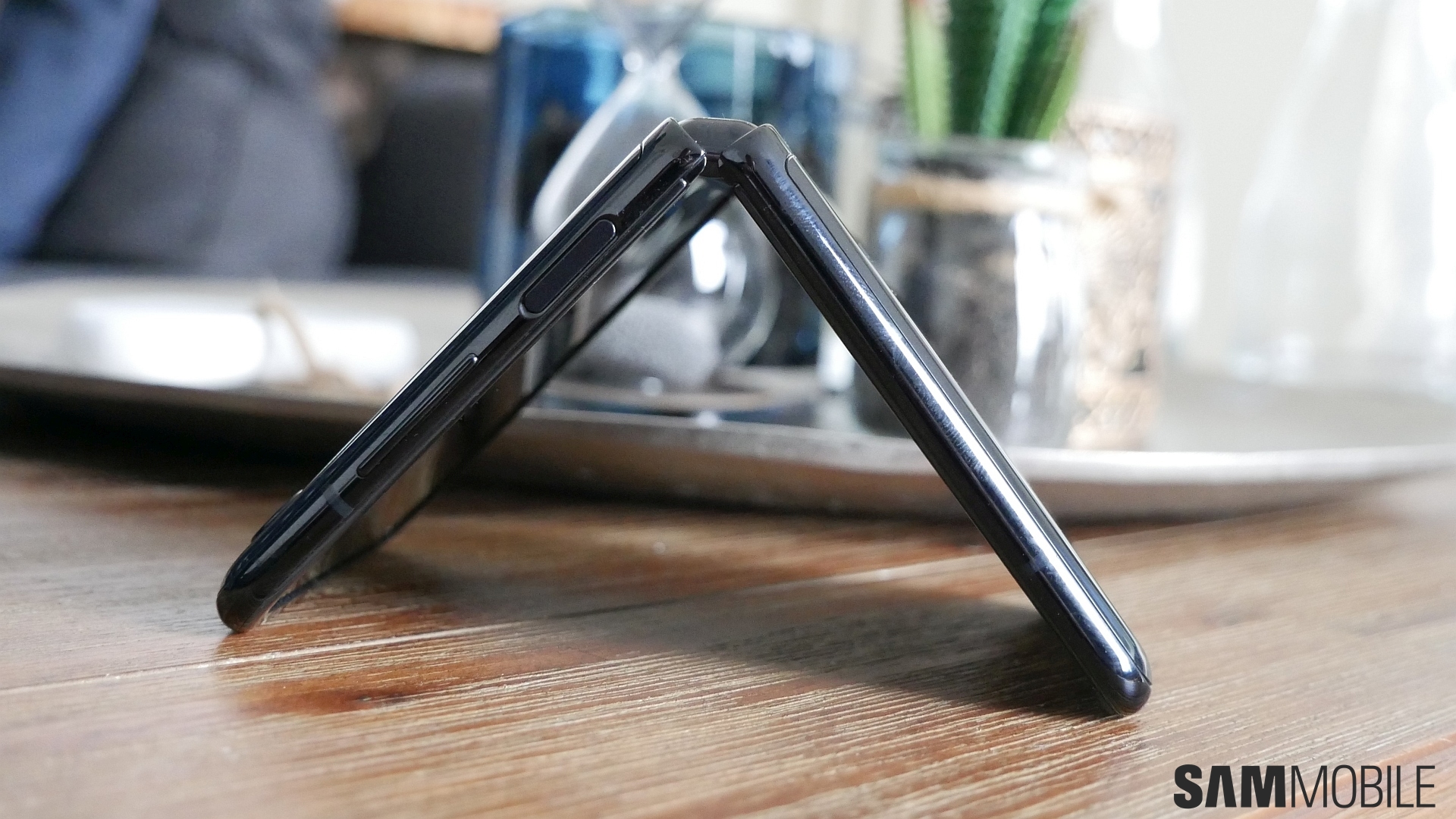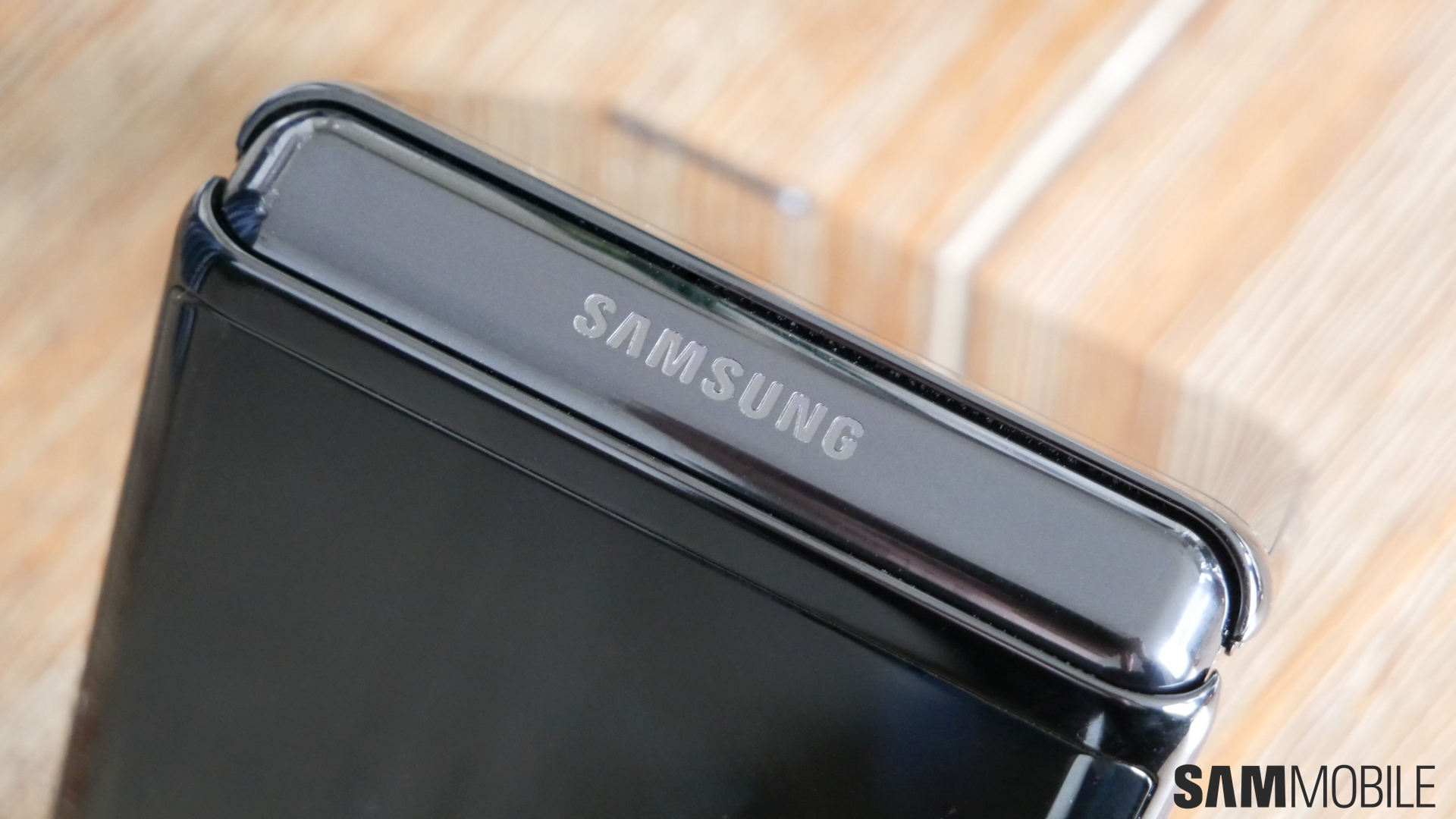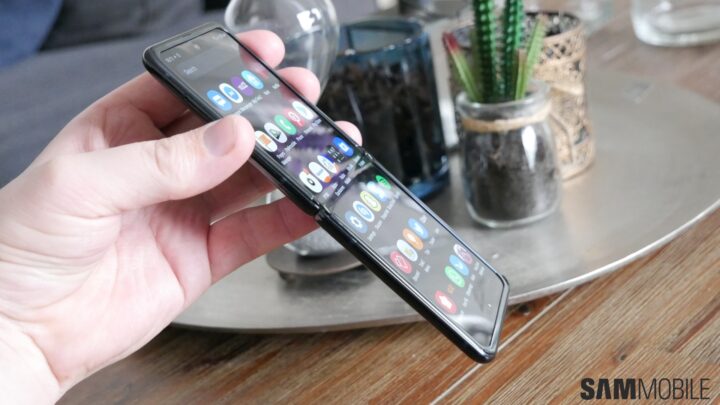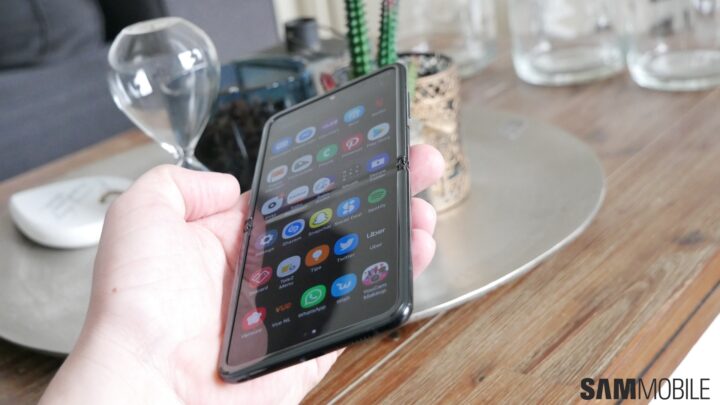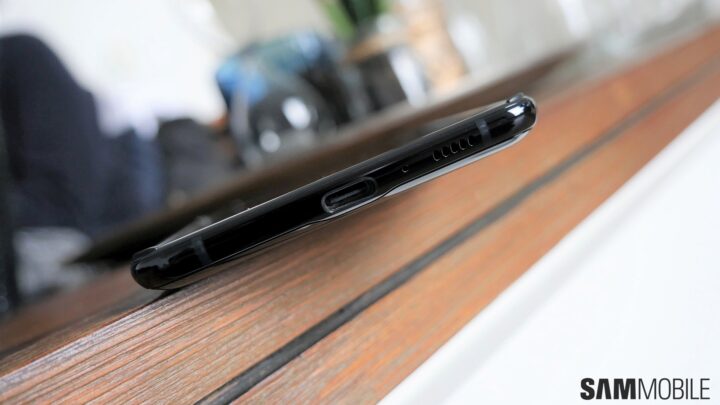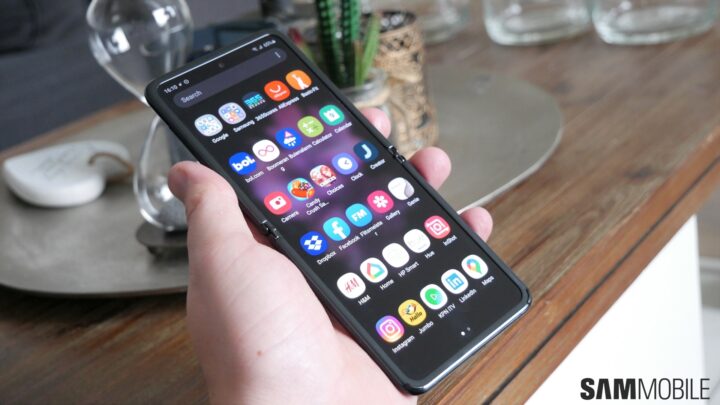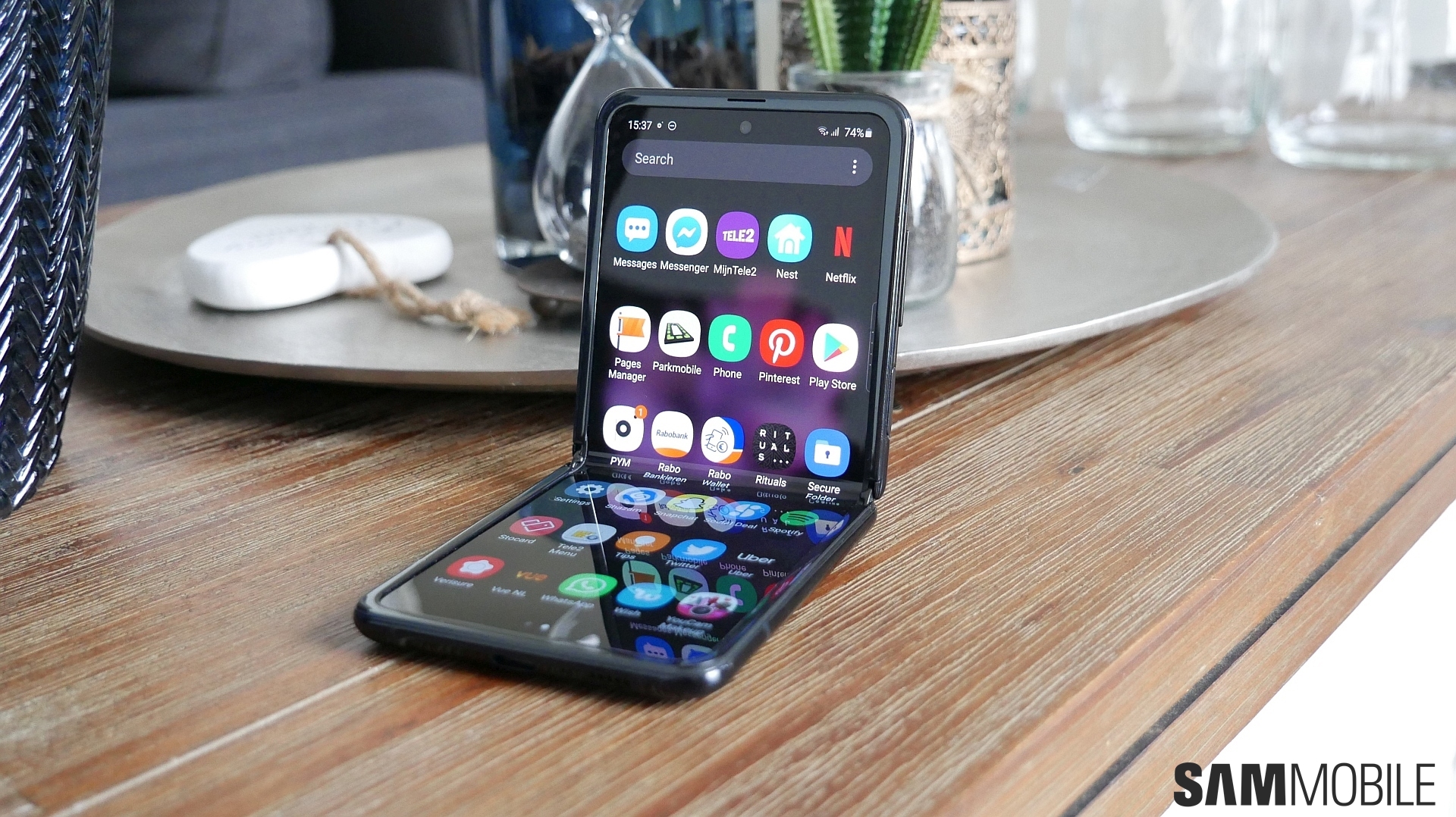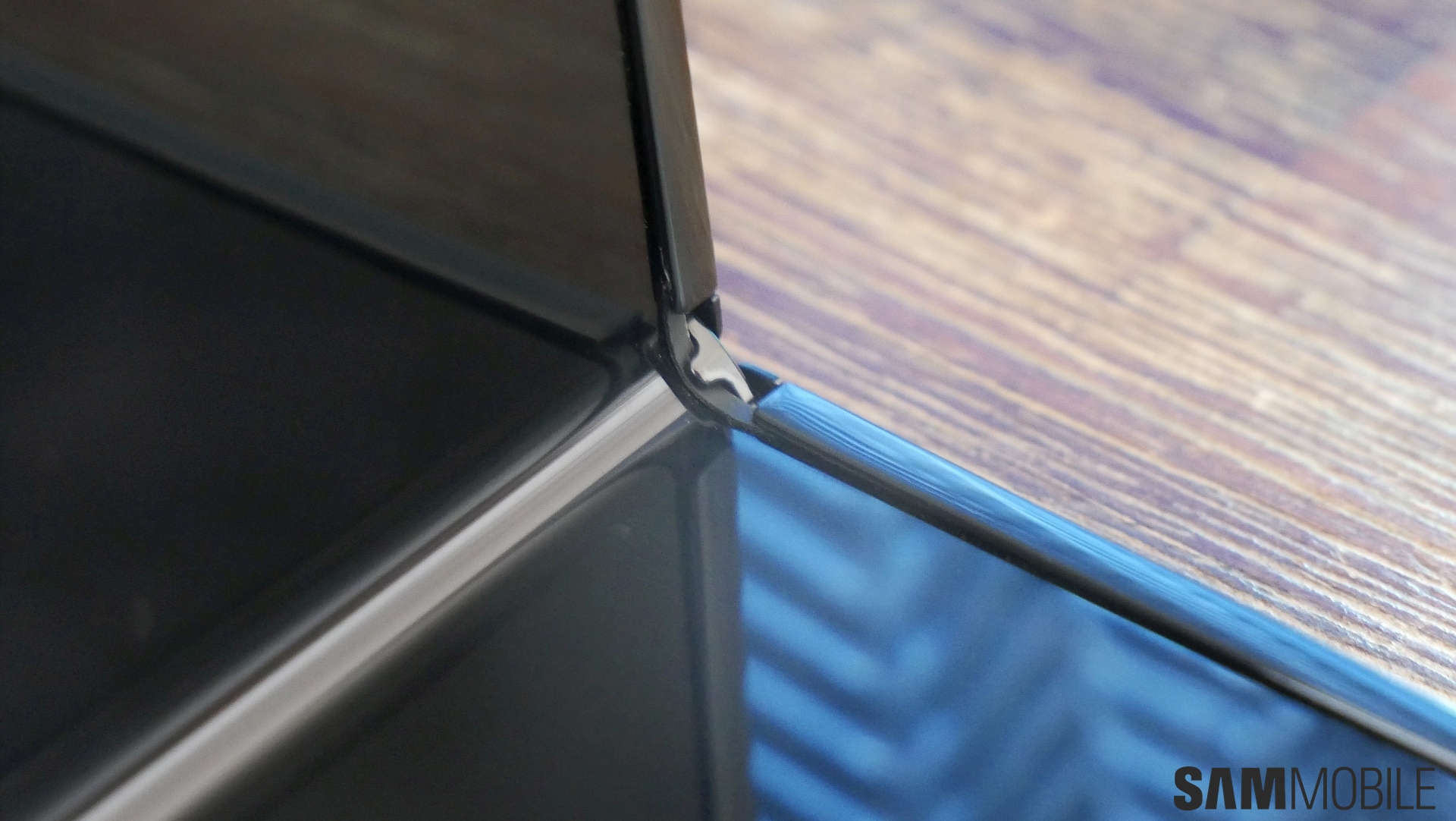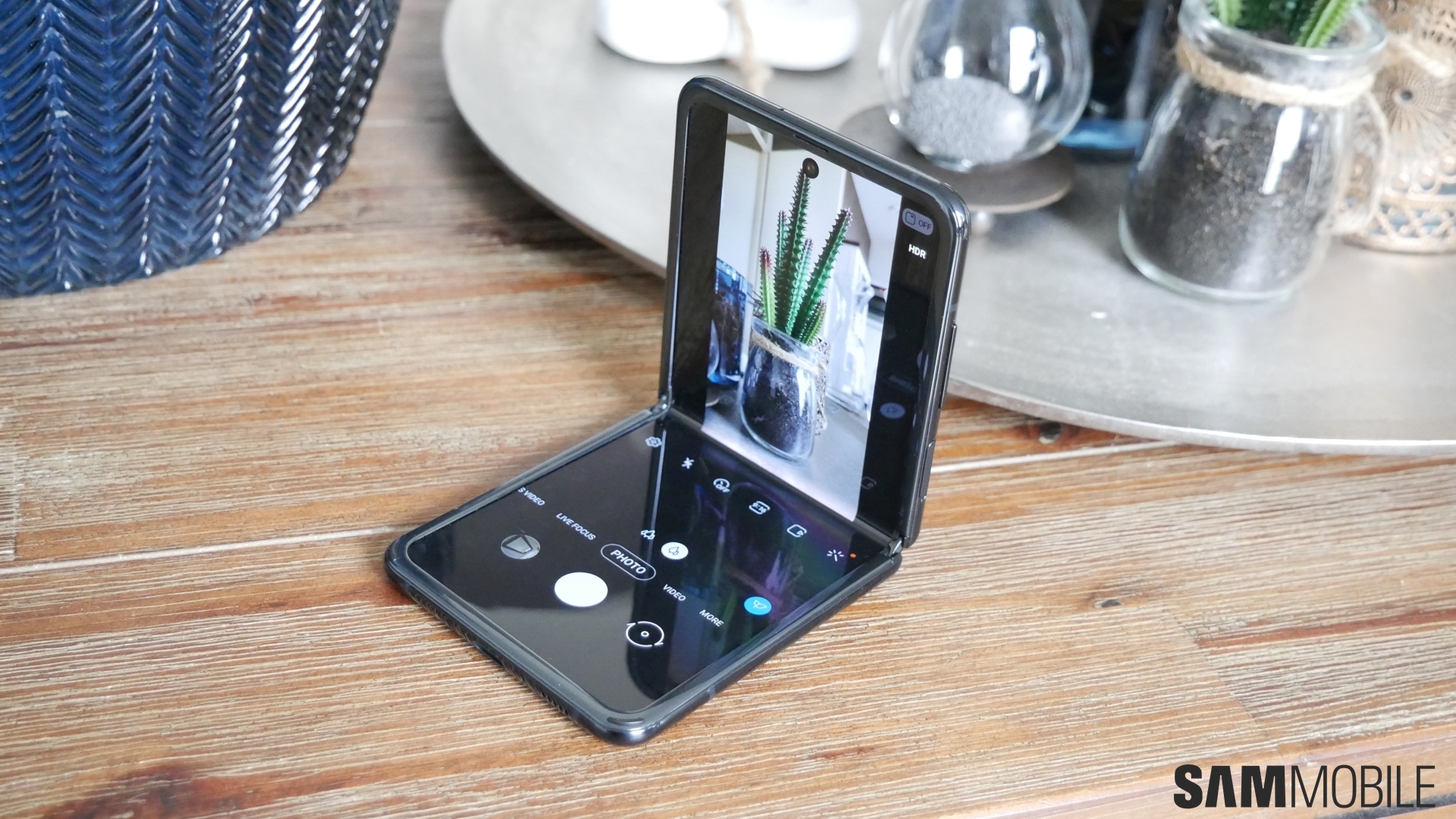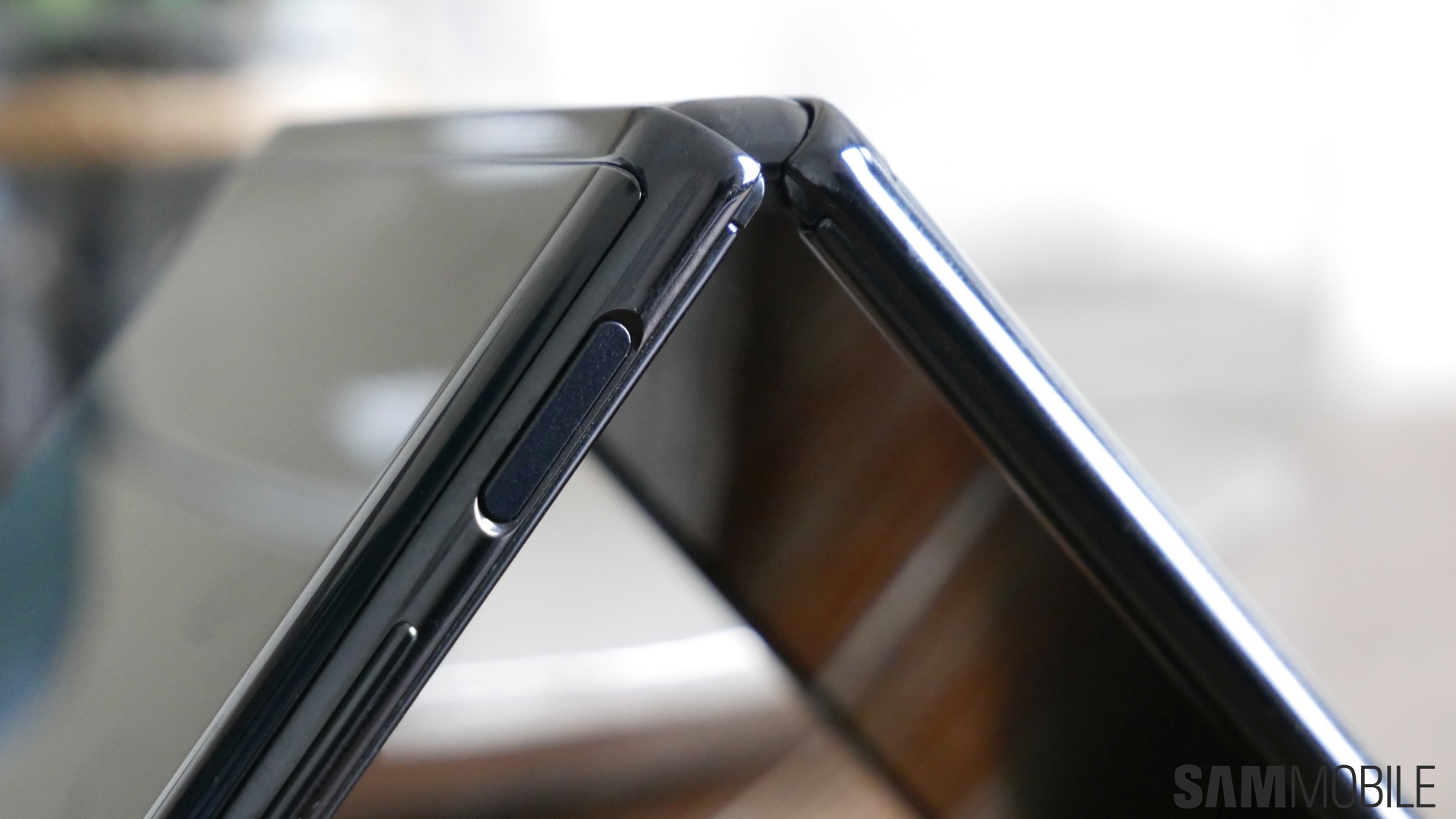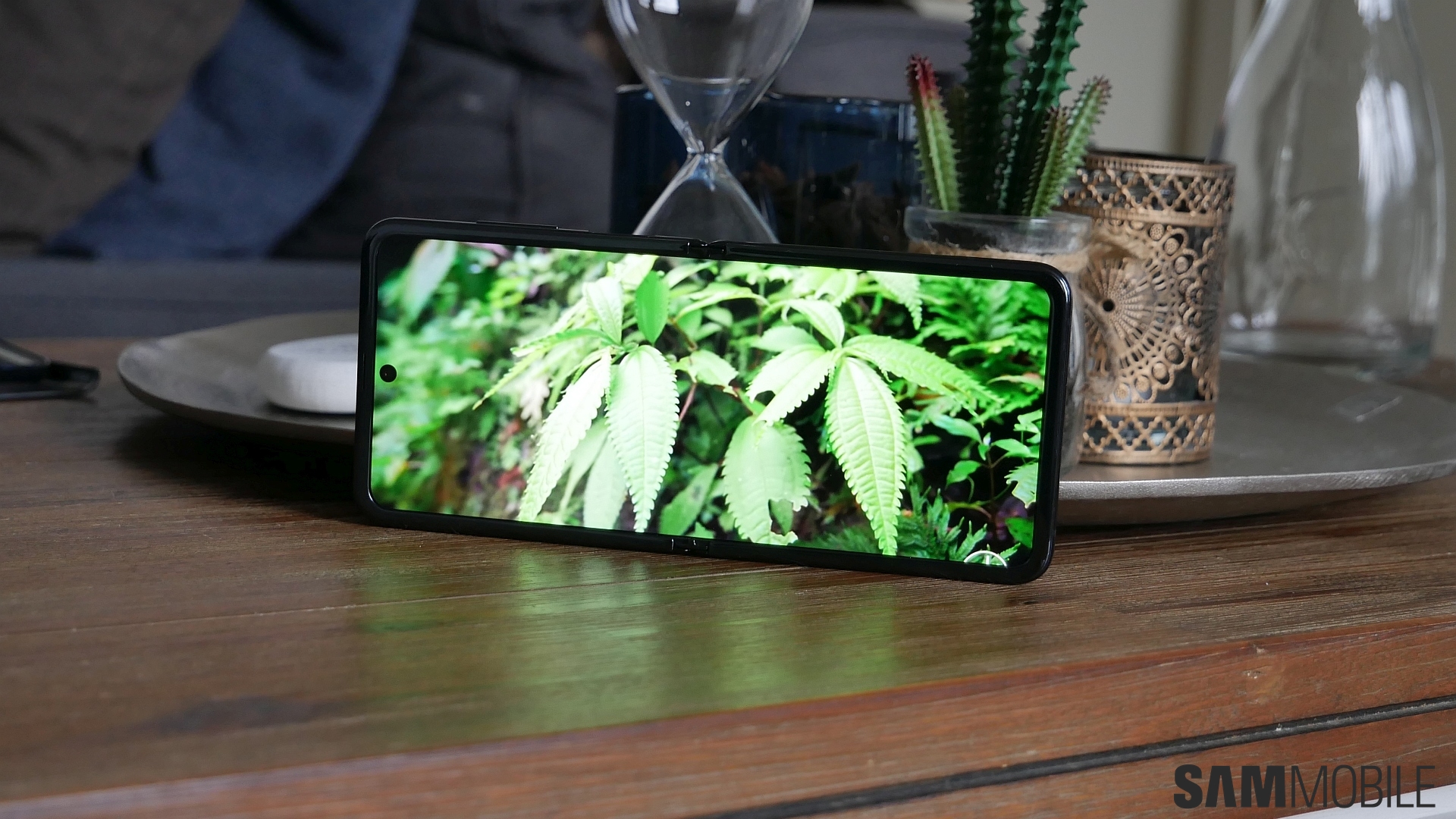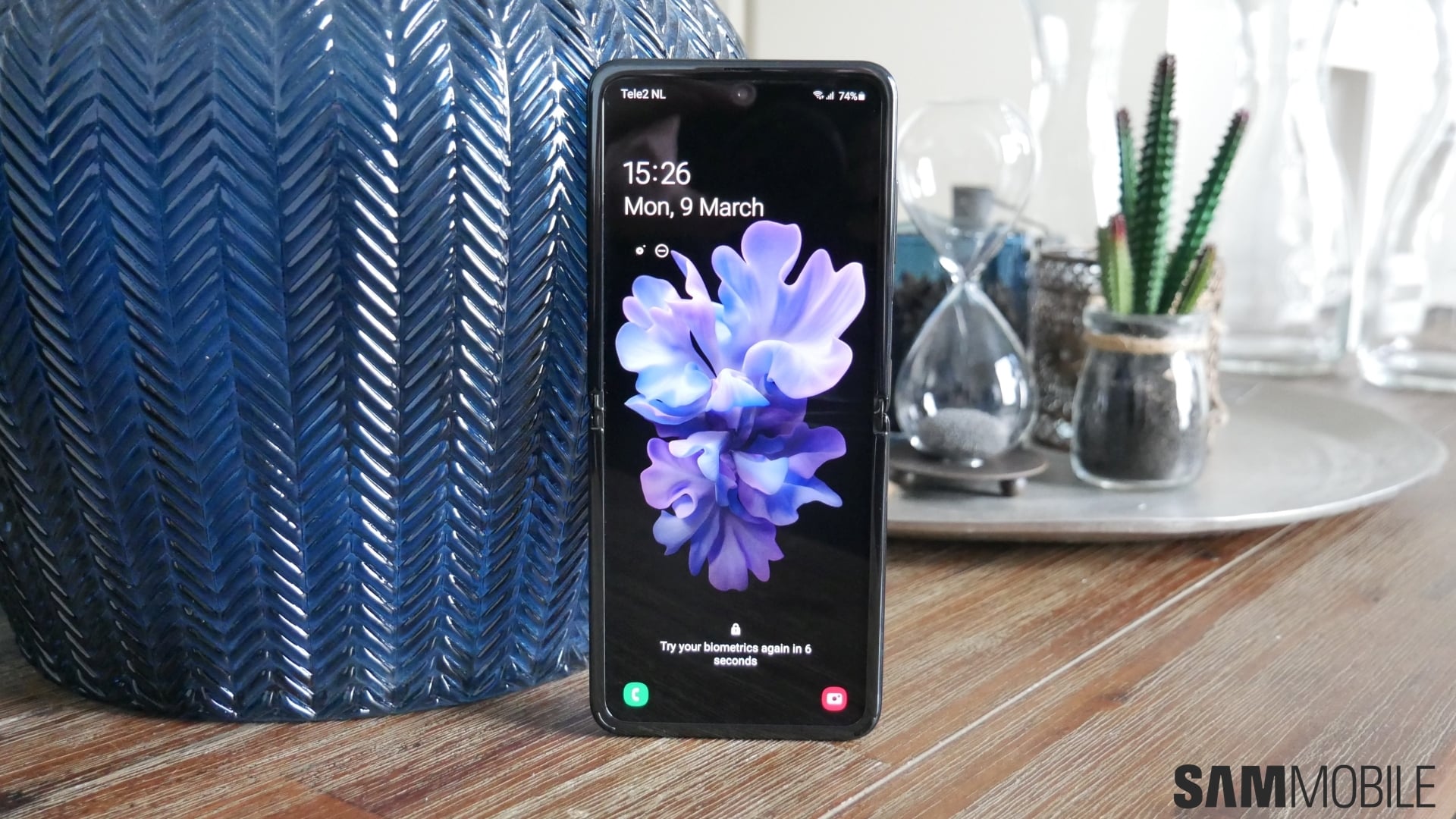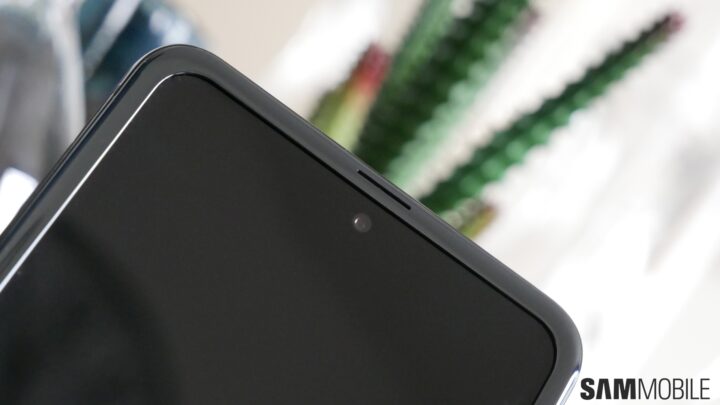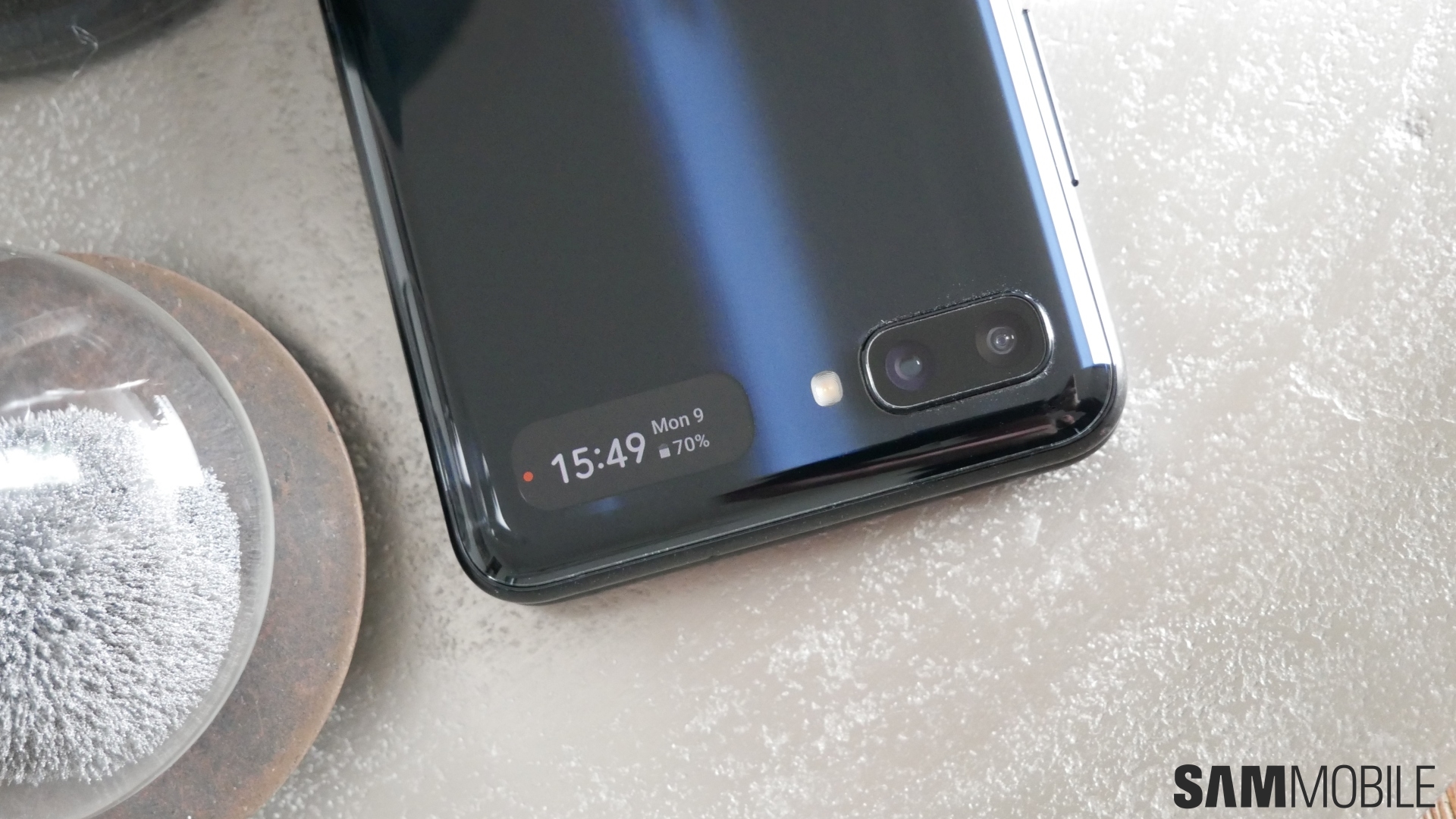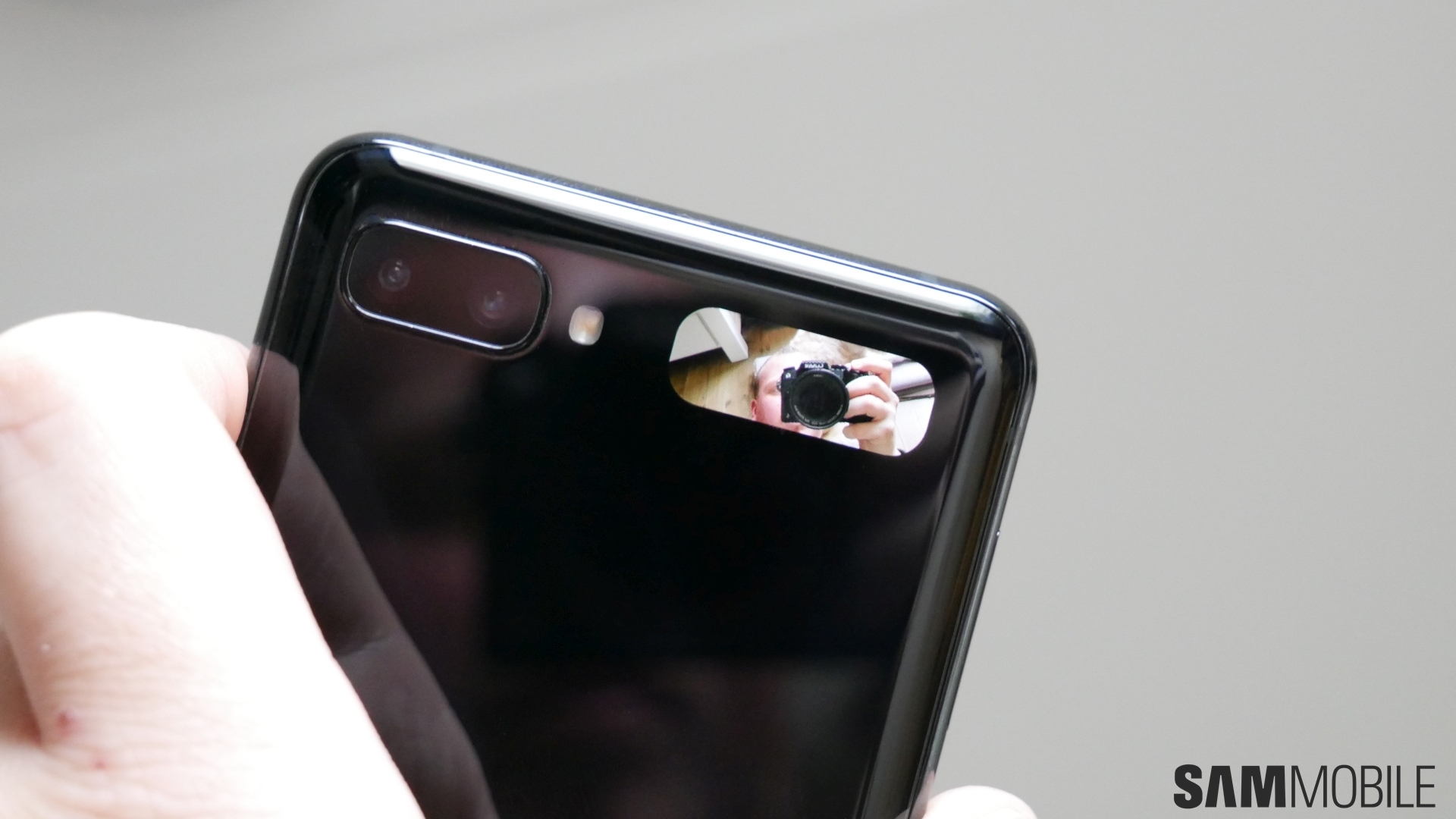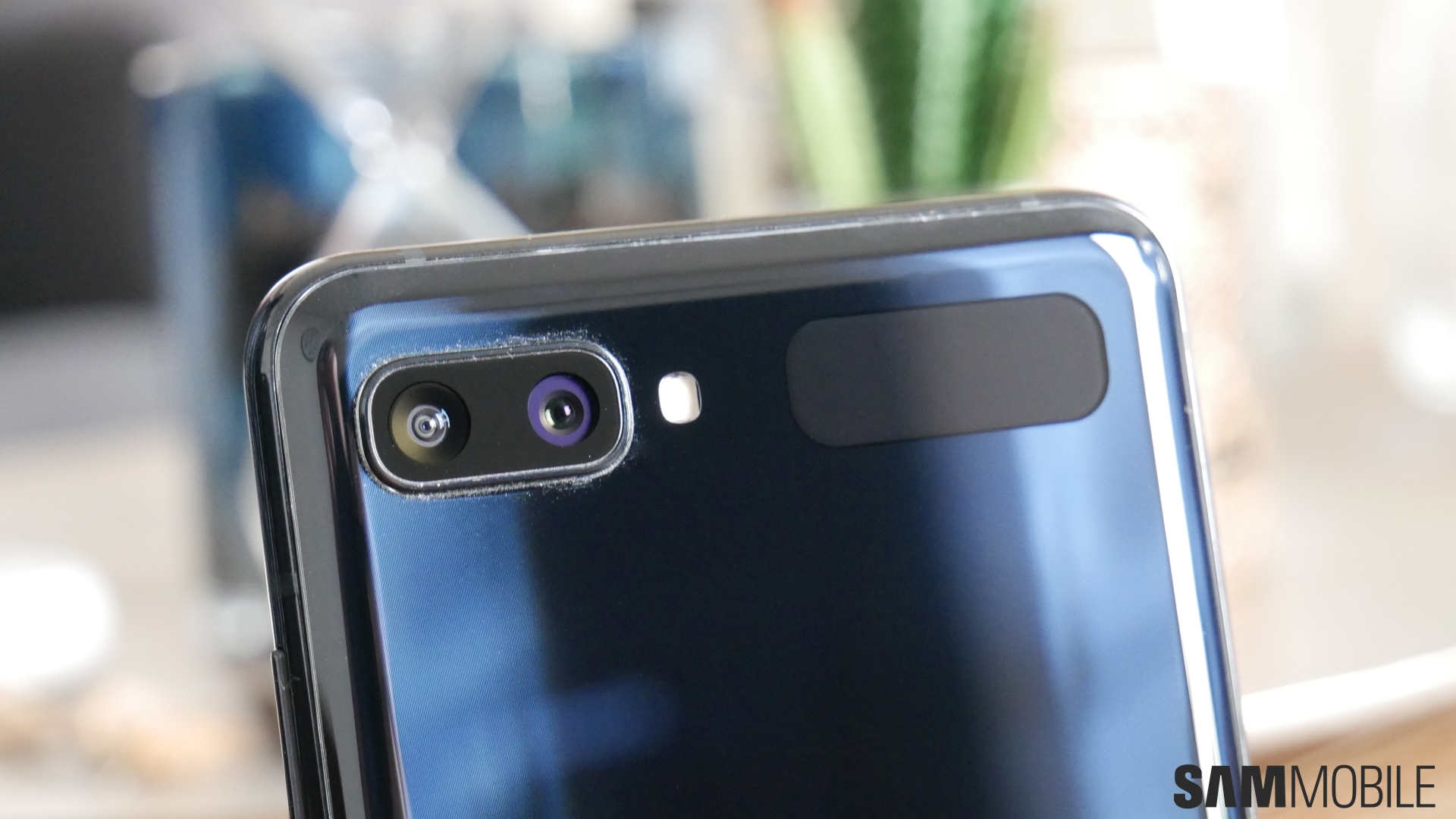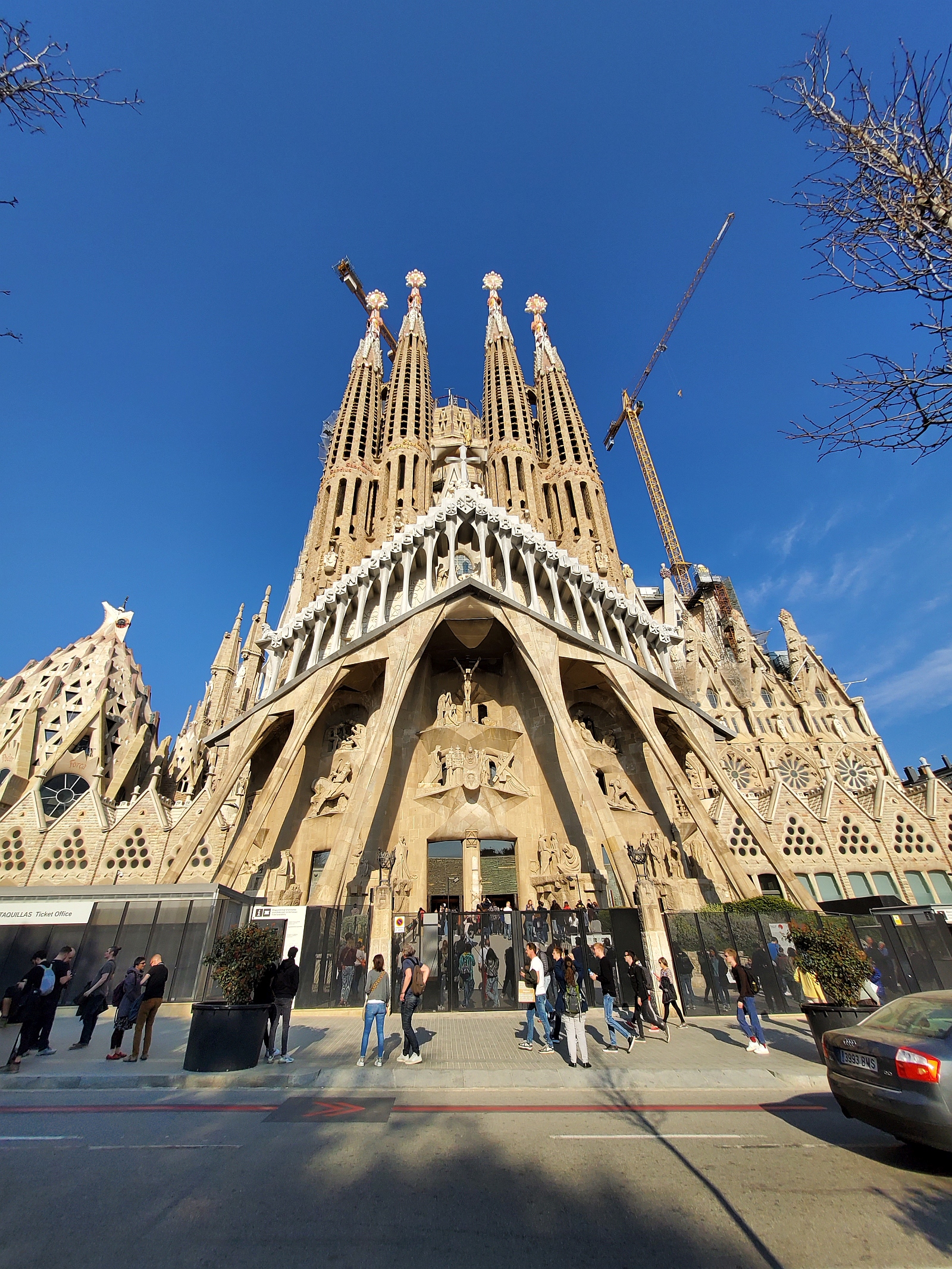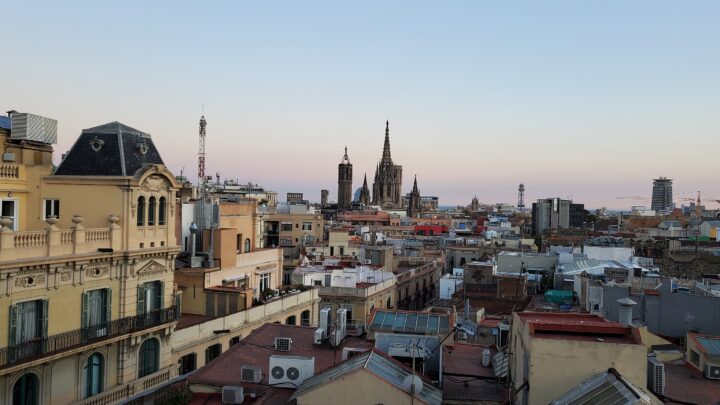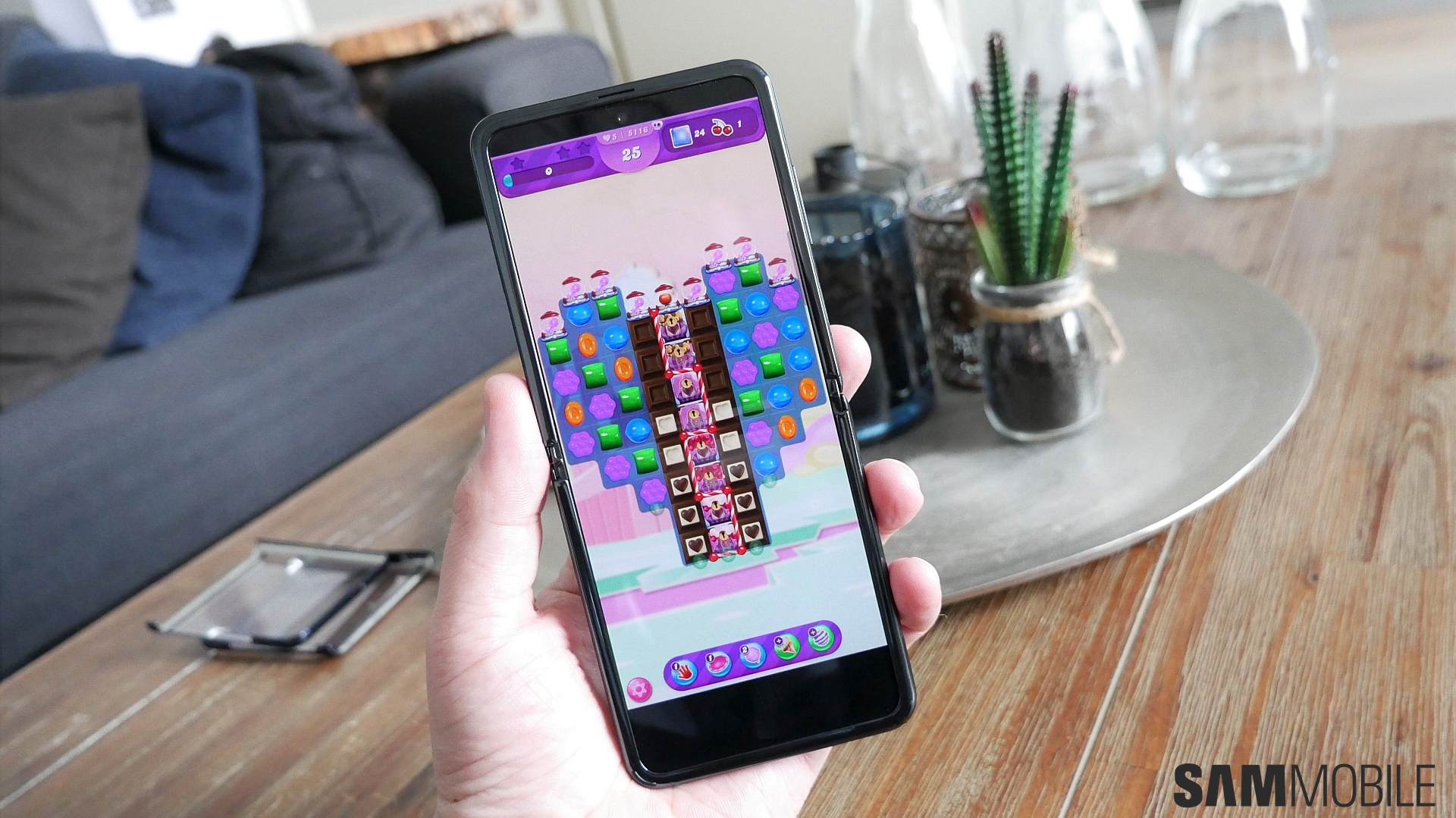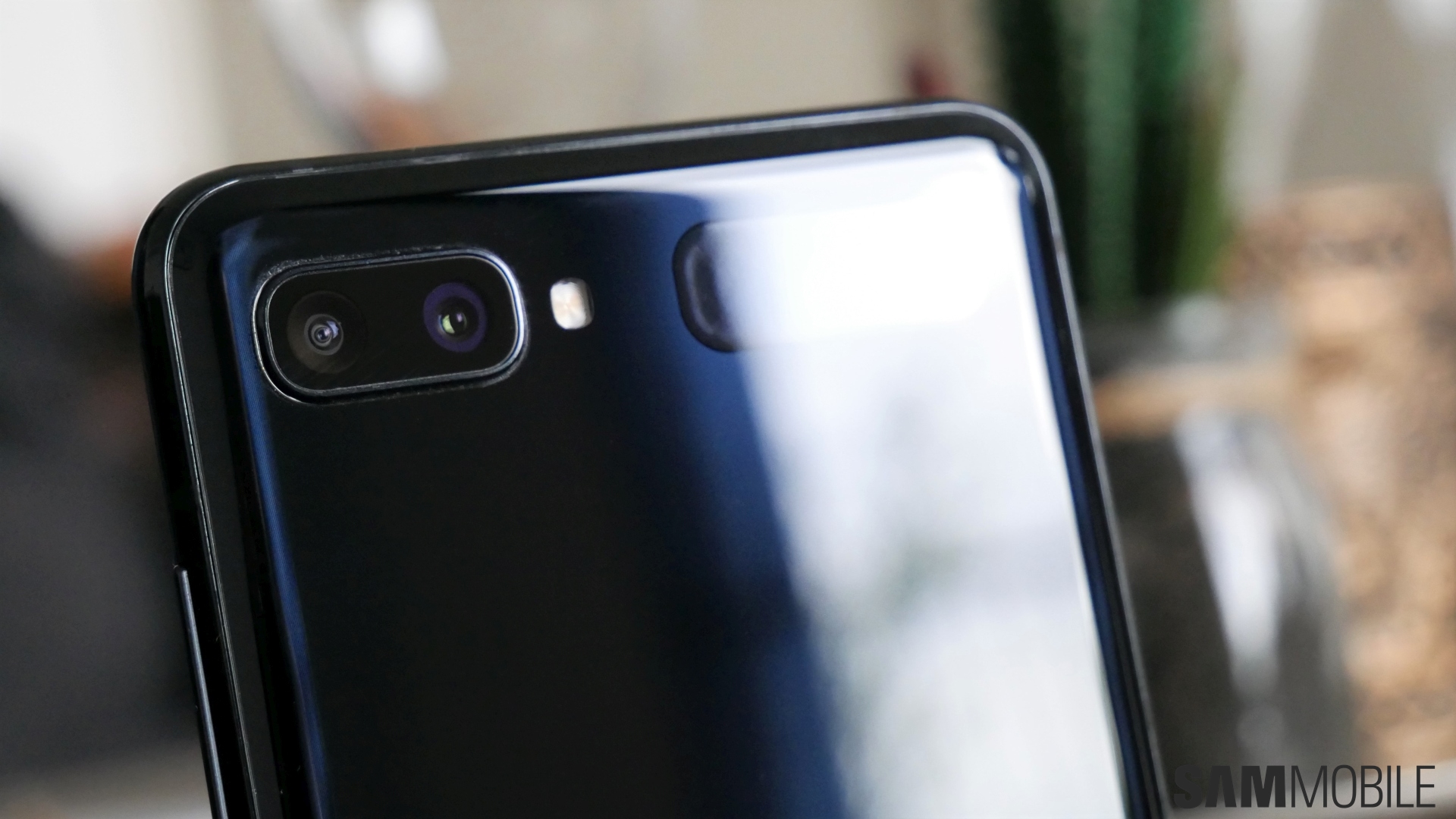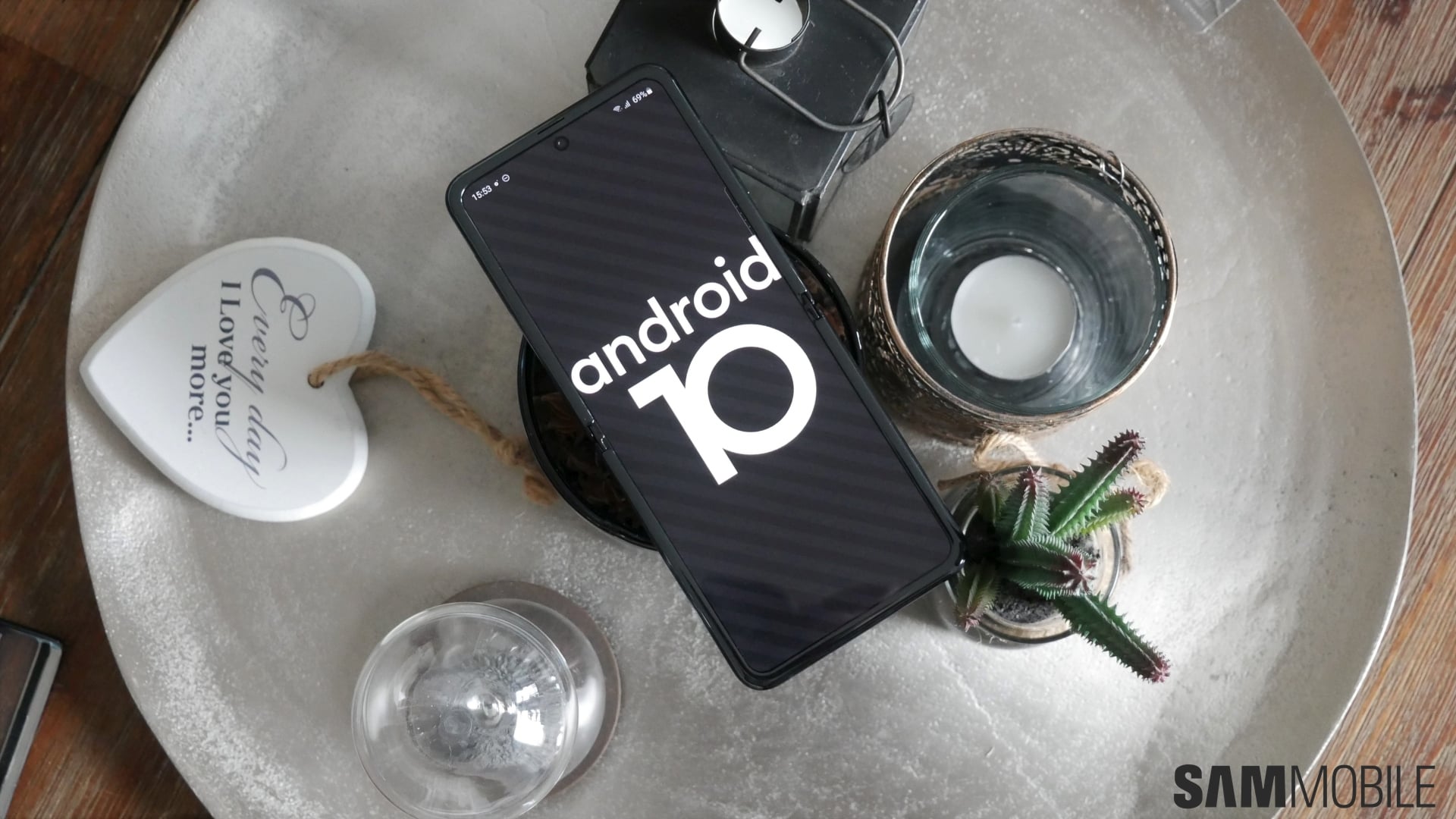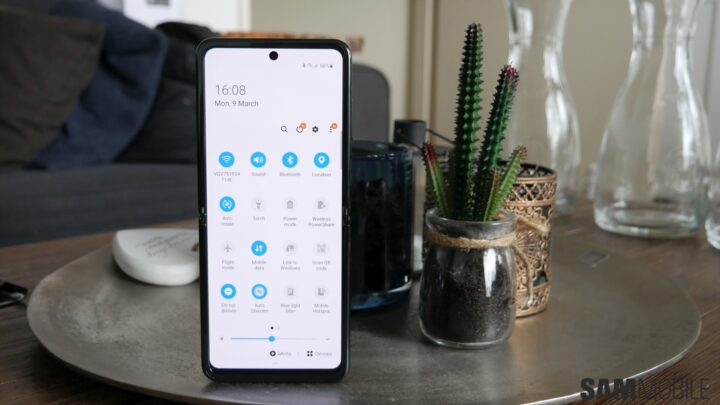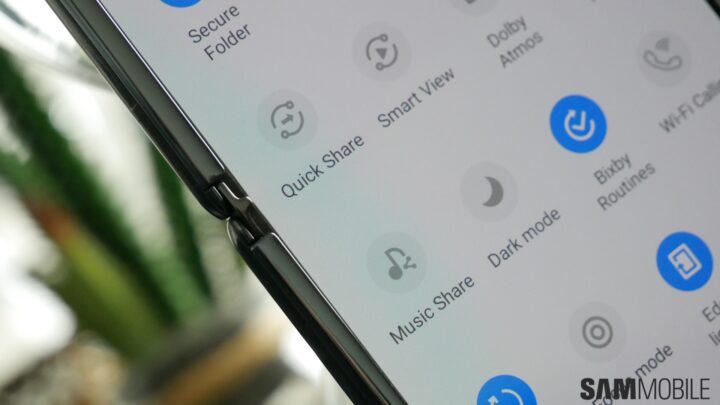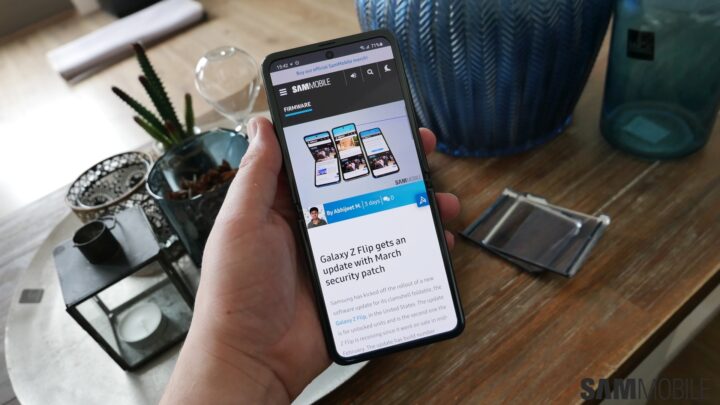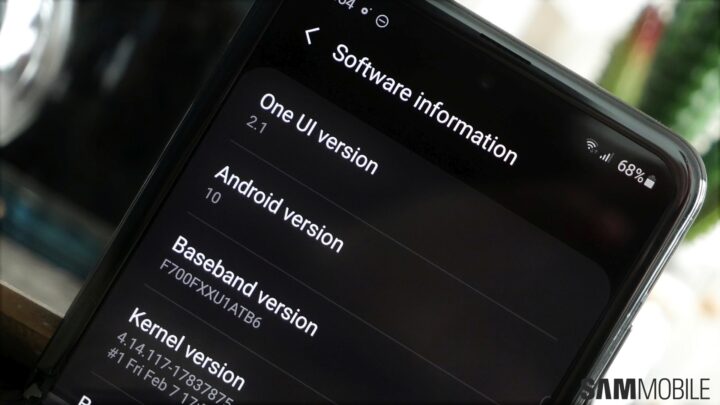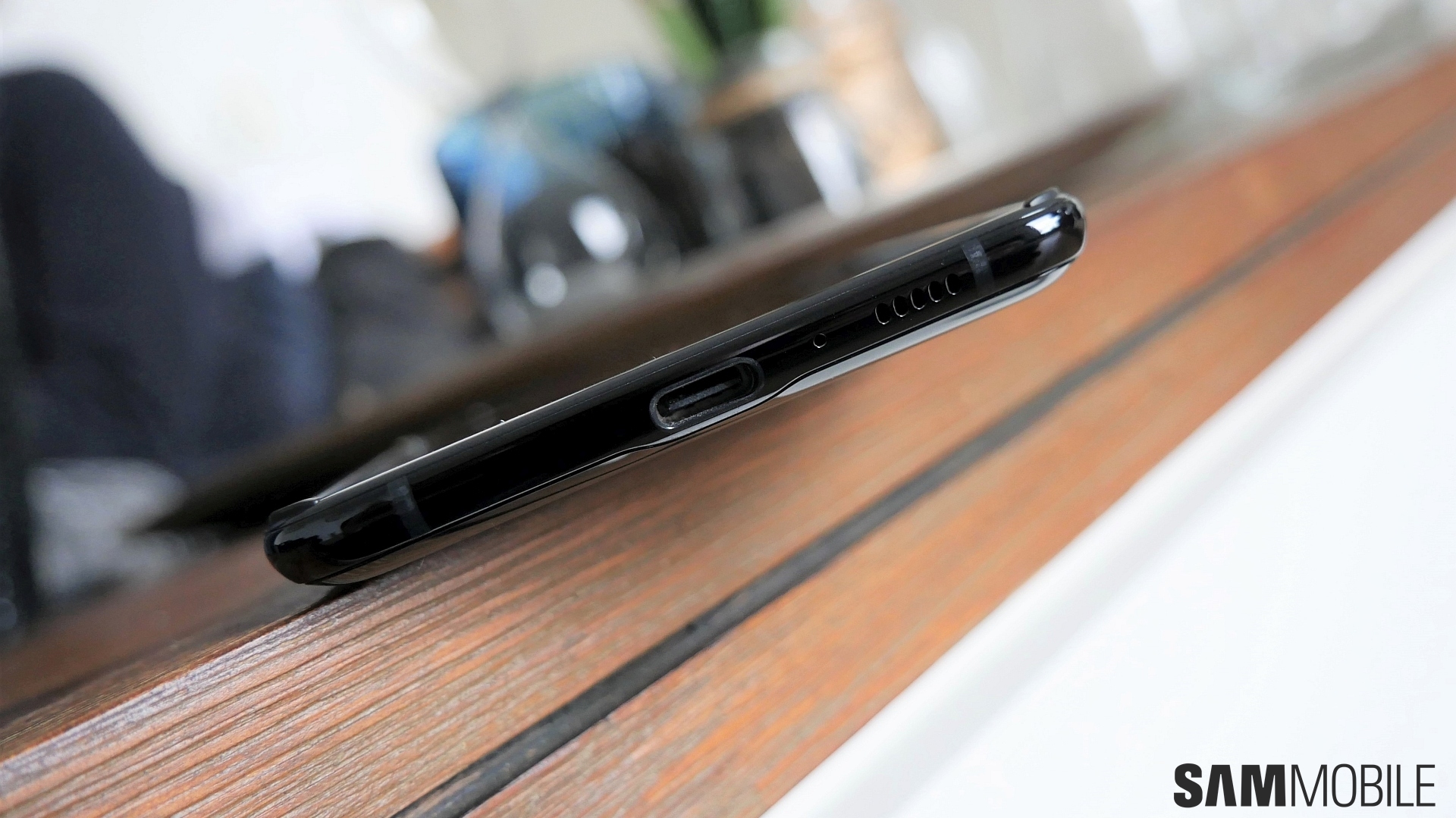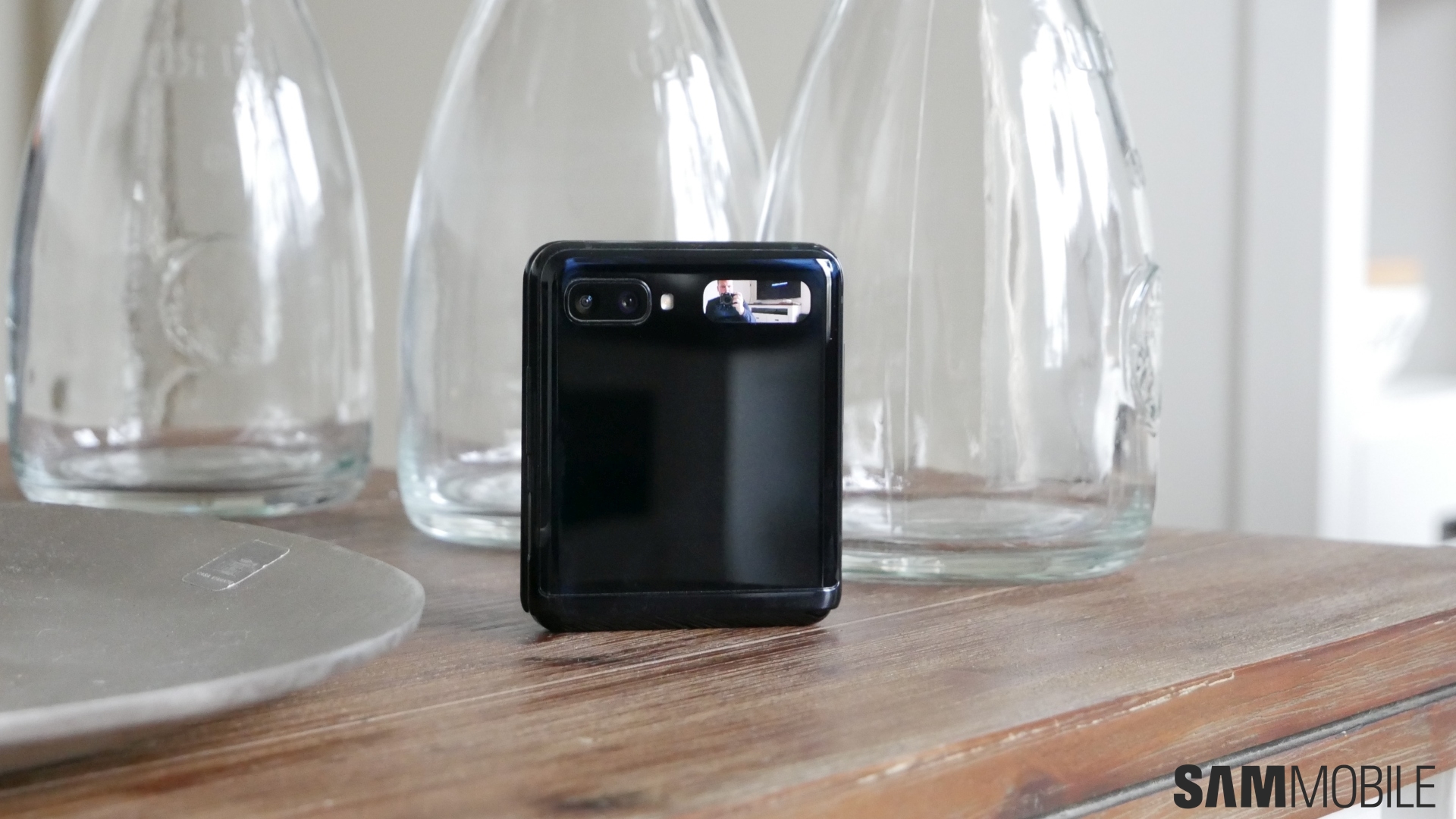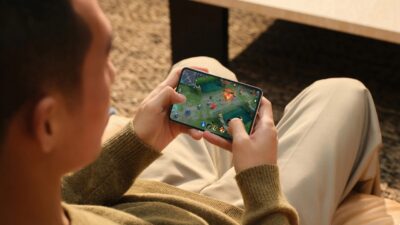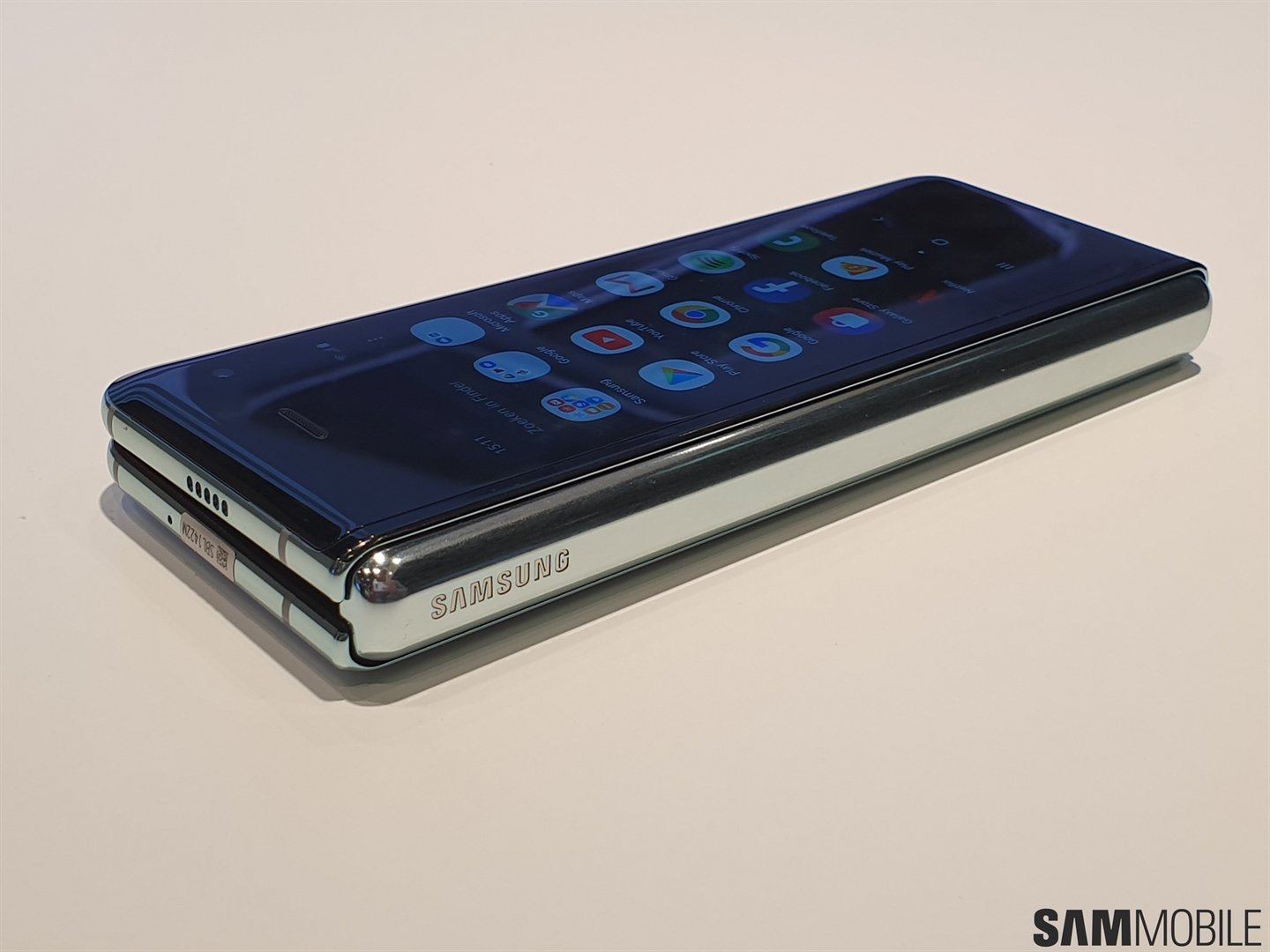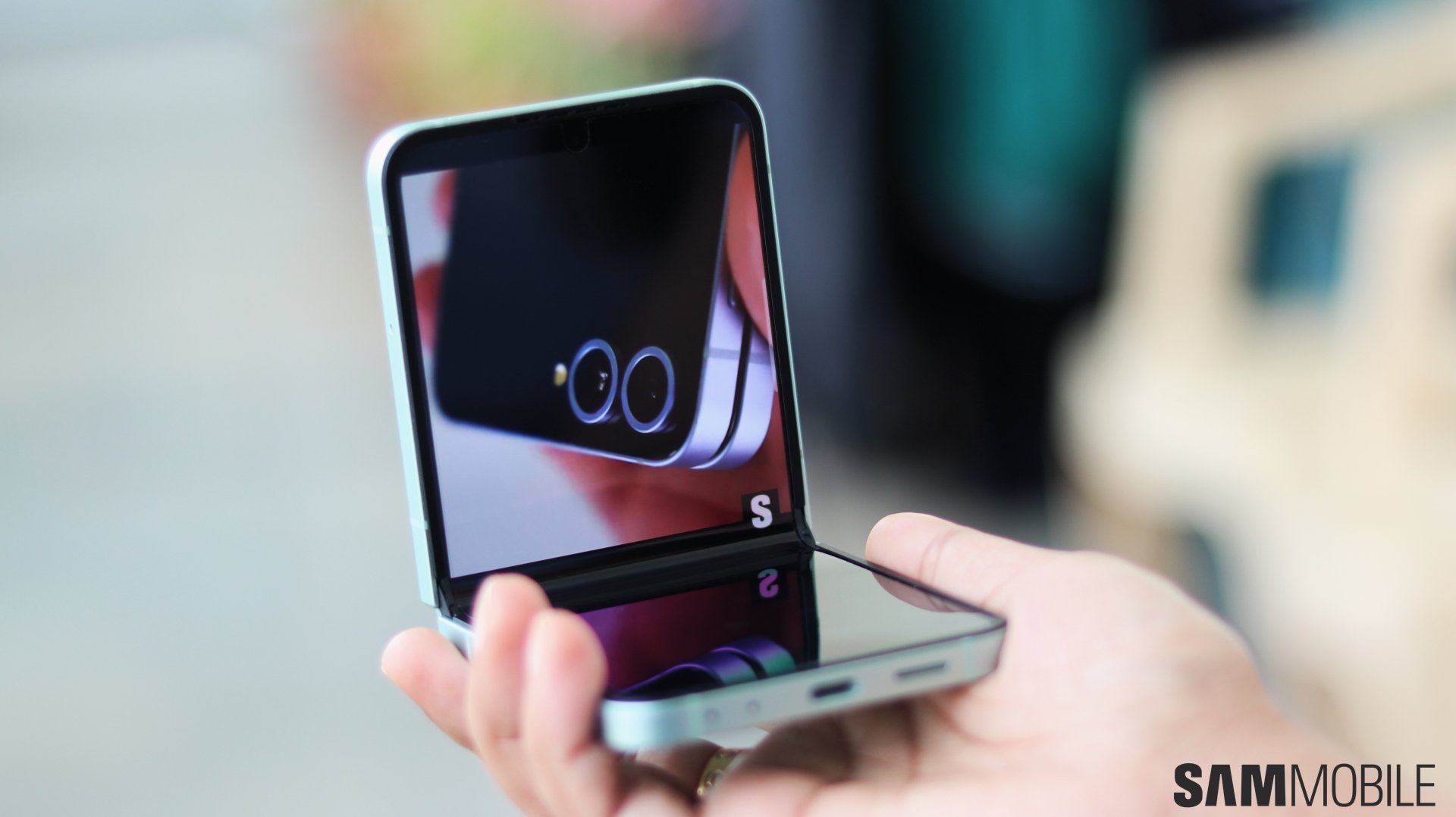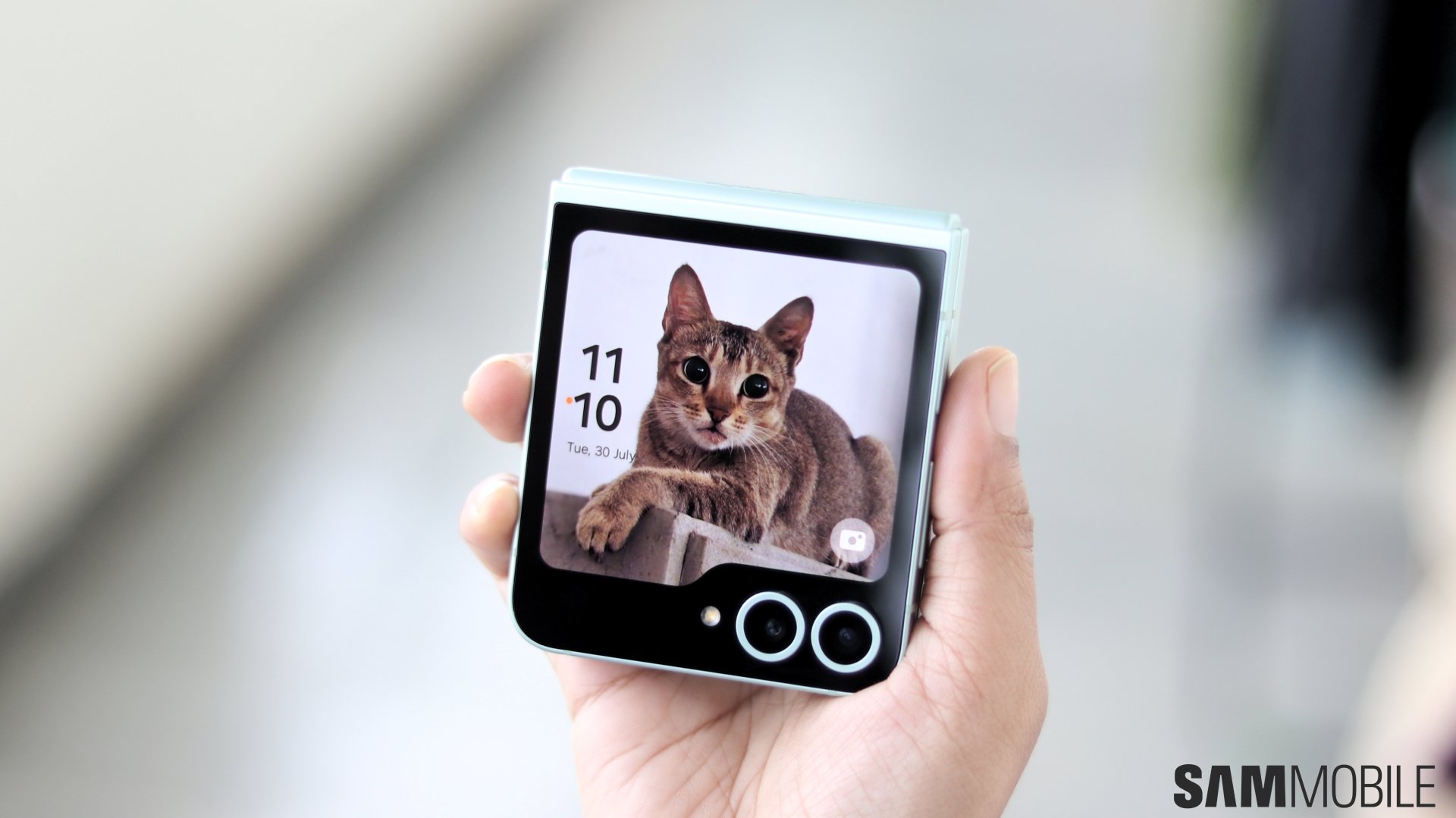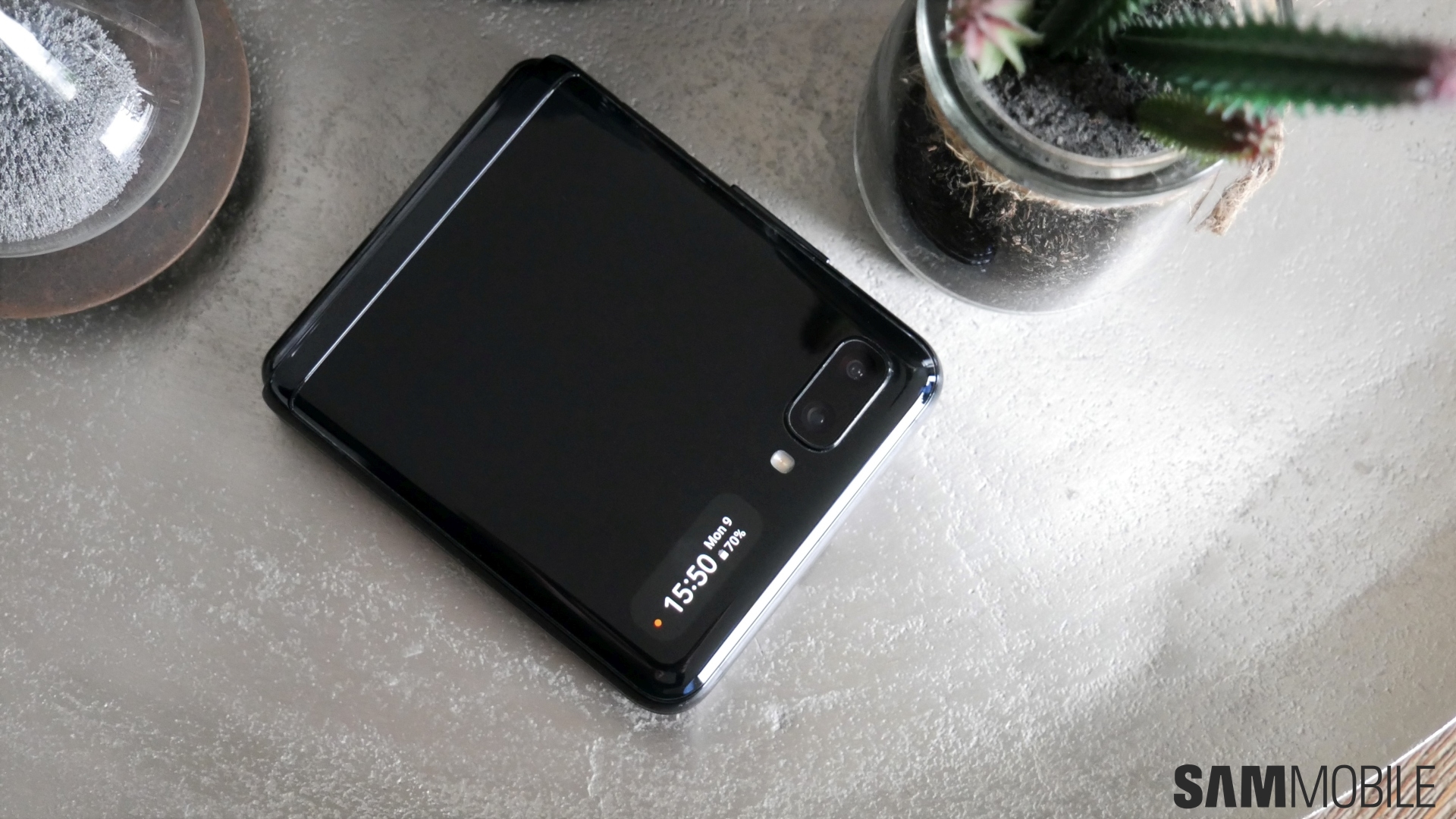
It wasn't always like this, though. Smartphone design has seen considerable change over the past two decades and surely this candybar form factor is not where the change ends. Samsung reinforced that belief when it launched the Galaxy Fold last year. It was the world's first proper foldable smartphone. Sure, it did stumble out the gate, but even after a year, there's still nothing on the market that can be considered a true competitor to the Galaxy Fold.
Samsung has been working on foldable smartphones for the better part of a decade. It's uniquely positioned to lead the market into the foldable age and the Galaxy Z Flip will, in my opinion, play a significant role in democratizing foldable smartphones. Samsung's second foldable smartphone demonstrates how quickly the company has adopted what it learned from the Galaxy Fold's launch.
Is it worth the $1,380 asking price, which isn't affordable by any stretch of the imagination? Are there any real reliability concerns about the device? Does the Galaxy Z Flip pack enough of a punch to be more than just eye candy? That's what we're going to break down for you in this Galaxy Z Flip review.
Galaxy Z Flip design
Samsung has revived the old flip phone form factor with the Galaxy Z Flip and it has done that with incredible finesse. Perhaps the biggest compliment one can give to the Galaxy Z Flip is how normal it feels. If the Galaxy Fold felt unwieldy and awkward because of its substantial footprint, the Galaxy Z Flip feels the exact opposite. Despite its complex hinge and the foldable display, the Galaxy Z Flip feels well built.
It's as if Samsung forwarded the clock on foldable smartphone development because many would not have expected this level of refinement from a clamshell foldable smartphone this early on. The only competitor to the Galaxy Z Flip exhibits glaring shortcomings in its design and consequently, its durability. The Galaxy Z Flip exudes confidence that it's going to go the distance with you.
The Hideaway Hinge splits this device into two halves, both of which are covered with glass on the outside. There will always be the risk of the glass breaking if the device is dropped. Our unit did suffer a couple of accidental drops and the glass has held up fine so far. Granted, we did have the case it comes with attached, but the case itself isn't more than a thin layer of plastic. The corner of the case did end up cracking in one instance, which just goes to show that you probably shouldn't rely too much on it for drop protection.
Glass on the outside means that it's a very pleasant experience to hold the Galaxy Z Flip in your hand. It's incredibly reflective, so much so that you can even use it to fix your hair and makeup in a rush. It's also a bonafide fingerprint magnet so you'll find yourself wiping it more often than not just to keep it looking pristine.
The dual camera and flash are positioned on the top half alongside the 1.1-inch Super AMOLED cover display. The SIM card tray is on the left frame while all of the buttons are on the right. The power button houses a capacitive fingerprint sensor, which is by far still the fastest and most reliable biometric solution. It's placed in a sweet spot so it doesn't matter if you're flipping the phone open with your left or right hand, it's easily reachable with the index finger of the left hand and the thumb of the right. Just don't expect to find a 3.5mm headphone jack at the bottom because the Galaxy Z Flip doesn't have one. The mono speaker is the only thing keeping the USB Type-C port company at the bottom.
When folded, the Galaxy Z Flip is about as thick as two Galaxy Note 10+'s stacked on top of each other, but don't let that put you off. It folds on to itself so it becomes very compact, easily fitting inside your pocket, even the smaller inner jacket pocket. This compact footprint is particularly great for ladies. The ones on our team who have been using the Galaxy Z Flip as their daily driver say that it fits perfectly inside their jeans pocket, which also frees them from carrying a handbag just to put the phone in.
Unfold the device and you're greeted by its 6.7-inch Infinity Flex display. Due to its 21.9:9 aspect ratio, the Galaxy Z Flip is much narrower than the smartphones that we have become accustomed to, but it's a refreshing change. This is one of the easiest devices to wrap your hand around and one-handed usage doesn't require nearly as much finger acrobatics as a conventional 6.7-inch phone.
What's remarkable about the Galaxy Z Flip is that it doesn't require you to make any compromises to live with it. Samsung has done a great job with its design, given just how refined, comfortable and, most importantly, how solid it feels. It has made the Galaxy Z Flip the blueprint for the resurrection of flip phones.
Galaxy Z Flip hinge
The hinge is a core component of foldable smartphones and as such, it deserves to be talked about separately. Samsung's Hideaway Hinge for the Galaxy Z Flip does things a bit differently than the one on the Galaxy Fold. First, there's the promise of increased durability. Samsung says that there's a nylon fiber shield inside the hinge which will help keep dust and grime out of the moving parts. That's not to say it will offer complete protection against dust but there should be a marked improvement in durability compared to the Galaxy Fold. It's certainly a welcome addition – anything that helps make foldables more durable can only be appreciated.
Samsung has also applied an important lesson learned from the Galaxy Fold. The hinge is reinforced with “T” caps, the ones introduced with the second coming of the Galaxy Fold, for enhanced protection. Despite it being very securely locked down, the hinge is one of the reasons why the Galaxy Z Flip, and every current foldable smartphone for that matter, does not have an IP rating. Water and dust resistance will be the next major step in the foldable revolution and I'm confident that it will be Samsung that leads the charge on this a few years down the road.
What stands out about the hinge is just how well built it feels. You don't hear any creaking and there's no play in the gears, yet it makes the device fold shut with a rather satisfying snap. This solid build is a big reason why you will feel confident with the Galaxy Z Flip. However, it doesn't make the display fold completely flat. There's a tiniest of gaps between the two halves of the device when it's folded shut.
That largely has to do with the limitations of the Galaxy Z Flip's foldable glass as well. There's potential for pocket debris to make its way between the two halves so ideally, you'd want to clear your pocket of any coins or abrasives before putting your Galaxy Z Flip in there. On the flip side (pun intended), this tiny gap is where you'll slide your thumb when opening up the device with one hand.
The hinge is noticeably rigid and there's a very good reason for it. Samsung has made it capable of doing more than just opening and closing the device. This rigidity is what allows the Galaxy Z Flip to offer Flex Mode. Frankly, it's one of the best qualities of this device. It lets you use almost the entire spectrum of angles between fully open and fully closed. This allows for a lot more flexibility when using the device.
The Galaxy Z Flip can effectively become its own tripod when you want to take photos or make video calls hands-free. Just prop it open at an angle and place it on a flat surface. We had quite a lot of fun taking group photos with it around the city, placing the phone on a ledge or a wall. Want to watch a YouTube video or scroll through Instagram while having lunch at your desk? Prop the phone open at a 90-degree angle and set it right in front of your eye line – no more awkward neck-craning.
Being able to adjust the angle of the screen towards you provides a level of convenience that smartphone owners just aren't used to. The concern with many of the features that are much hyped about on a new device is that they'll be nothing more than a novelty, something that you use once or twice when you get the phone the first time and then forget about it.
We're glad to say that this isn't the case with the Galaxy Z Flip's Flex Mode. It's a really smart way to let users do more with their foldable phone and its usability is only going to improve. The native camera app is really the only app that can adjust dynamically to suit Flex Mode out of the box, but Samsung says that other apps will eventually support Flex Mode.
It will also be interesting to see how the hinge's rigidity holds up over time. We'll certainly revisit this in six months or so as the Galaxy Z Flip is now one of the devices in our daily rotation. That should provide a good idea of how the hinge is going to hold up over a longer period of time. Given how it feels right out of the box, one can assume that Samsung has engineered it well enough to do what it's supposed to do without degrading for at least a couple of years.
Galaxy Z Flip display
Folding on a horizontal axis, the Galaxy Z Flip features a 6.7-inch FHD+ Dynamic AMOLED Infinity Flex 21.9:9 aspect ratio display. Samsung proudly claims that it's the world's first foldable glass display. Indeed it is, but at just 30 micrometers, this is a very thin layer of glass. Anyone expecting Gorilla Glass 6 level durability out of it is just setting themselves up for disappointment. Samsung has topped the glass with a protective layer similar to the one found on the Galaxy Fold for added protection. There's even a shock absorption layer underneath the glass to make the Galaxy Z Flip's display more durable.
So what does it all mean in the larger scheme of things? For starters, the display does feel more solid to the touch, more so than the Galaxy Fold. It's also very well protected since it's tucked into the bezels which are more noticeable than you'd expect. The bezels are also there to prevent the screen from slamming on to itself when you snap the phone shut. To further prevent that eventuality, Samsung has placed rubber bumpers on the bottom bezel.
The crease is unavoidable in a foldable smartphone, at least given where the technology is at right now and as such, the Galaxy Z Flip's display also has one. However, since it folds along a horizontal axis, the crease is much smaller and less prominent than the one on the Galaxy Fold. You will certainly feel it when you slide your finger across the middle and notice it when light hits the display in a certain way. However, it will hardly be an eyesore when browsing the web, scrolling through Instagram, watching videos on YouTube or basically doing anything you do on your phone. It just seems to fade away.
The crease will certainly appear more prominent when you have the device in Flex Mode but then again, that's to be expected. Frankly, I find it a bit unfair to make a big issue out of the crease. For what it allows you to do, which is to literally fold your phone in half, debating whether or not the crease reflects negatively on the allure of the device is akin to making a mountain out of a molehill.
Samsung's AMOLED displays tend to be great with deep blacks, excellent viewing angles and truly vibrant colors. All of that holds true for the Galaxy Z Flip display as well, which has a cutout in the display for the front camera. This looks more aesthetically pleasing than the irregular camera notch on the inside of the Galaxy Fold. It's impressive that the company is shipping a display of this quality in a device that folds. However, it can't get as scorchingly bright as the display on Samsung's conventional smartphones.
Perhaps we could cut the Galaxy Z Flip some slack here, given the fact that it's a first-generation clamshell foldable. This is most likely due to a limitation of the foldable display technology and we can certainly expect Samsung to make improvements to this in future iterations of the Galaxy Z Flip. We also hope that Samsung does something about the cover display in future iterations because the 1.1-inch Super AMOLED display on the Galaxy Z Flip isn't of much use. Tap it and it will show you the time, date and the battery percentage. You can swipe to the right to see notification icons, and it can even provide previews for certain notifications.
However, the preview ticker scrolls by and cuts off abruptly, thus serving no real purpose. You will need to flip open the device every single time anyway since it's not possible to reply to texts or shoot quick replies with the cover display. Samsung has tried to make the cover display more useful by allowing it to be used as a viewfinder for the dual camera system. This is a feature that would make sense for the Galaxy Fold given its sizable cover display; on the Galaxy Z Flip, it doesn't feel more than a gimmick as the cover display is just too small to accurately frame yourself in the picture.
Pressing the power button twice when the device is folded lets you access the camera. It's also possible to switch to ultra-wide by swiping right on the small display. The ambient light sensor is slow to register conditions, though, something we found out when trying to take selfies with the cover display out in bright sunlight. It was just impossible to see the display with the sun out in full force until we essentially jogged the ambient sensor to brighten it up. This is an unnecessarily frustrating part of the Galaxy Z Flip but Samsung likely had battery life considerations which is why it opted to keep the cover display so small. Hopefully, this is something that the company will improve in the future.
The durability concerns will only really be for the foldable display. Samsung says that the Ultra Thin Glass display on the Galaxy Z Flip is good for 200,000 flips. This means that it should at least last for five years, much longer than what most people keep their smartphones for. From a build quality perspective, the panel does feel solid and doesn't exhibit any creaking or flexing. A certain degree of care will be required when using the device so as to not damage the display, and you can't put any other screen protector on it, but we can confidently say that you will not have to go out of your way to make sure that you don't end up damaging it during normal use.
Galaxy Z Flip cameras
There are two cameras at the back of the Galaxy Z Flip: a 12MP f/1.8 wide-angle camera with optical image stabilization and a 12MP f/2.2 ultra-wide camera. Both are fine in terms of performance, as long as you don't expect the world out of them. In the right lighting conditions, the cameras capture sharp images with great detail. However, there's something to be said about the aggressive image processing. It noticeably tries to make the images pop more which leads to much higher saturation instead of a more balanced profile. The Galaxy Z Flip isn't the only Samsung smartphone to do this, of course. In simple words, when the lighting's good, the Galaxy Z Flip will have no problems spitting out social media-ready images.
It does struggle in low-light, though. This has been a common trait of Samsung's smartphone cameras. Images will lack detail and appear soft, likely due to the shutter speed being reduced. You may even experience it struggle to bring the entire subject into focus. This means that food photos inside dimly-lit restaurants will be far from pristine, with at least the corners of your plate being visibly outside the plane of focus. Night mode is present and it works much in the same way that it does on a lot of other Samsung phones. Photos come out much brighter in comparison but are also noticeably soft.
You'll feel the lack of a telephoto camera, particularly if you often find yourself in situations where optical zoom would come in handy, like when traveling. Samsung likely decided against including it due to space constraints and it obviously has to leave out some things to introduce in future iterations. The addition of a telephoto camera will certainly be a significant improvement to this device's camera setup. The experience is overall quite familiar otherwise, with Samsung offering the entire gamut of software features that we've seen on other devices, such as Live Focus, Pro mode, Hyperlapse, Food, etc.
The new Single Take camera mode deserves a separate mention. It can take up to four videos and ten photos when it's selected. It uses the entire camera system to capture a mix of photos in different modes like wide and ultra-wide, Live Focus, boomerang, short videos, etc. The idea behind it is to present you with many different options of a moment that you want to capture – like a birthday celebration – so you spend less time switching between the different modes. Just pick what you like and share it instantly. It works as advertised but the inability to use a timer in Single Take is a glaring omission. Samsung should add this ability in a future update.
The 10-megapixel f/2.4 selfie camera is positioned dead center in a punch hole in the display. This is a much better implementation compared to the odd notch on the Galaxy Fold. You're really not going to have any complaints from the selfie camera. It's quite capable of keeping you on top of your selfie game. You can utilize Flex Mode to take selfies with the main camera system as well. Set a timer and make do with the preview on that tiny cover display to take sharper selfies, though you might find it frustrating that it's not possible, at this point in time, to change the aspect ratio of these photos.
The Galaxy Z Flip wasn't intended to be a camera champ. Don't think that just because it was unveiled alongside the Galaxy S20 Ultra, which brings some of the most significant changes to mobile cameras, that some of that would rub off on the new foldable as well. It may very well take a few years before foldables can have a camera system of that sort. Don't let that disappoint you in the Galaxy Z Flip, though. The cameras may not be exceptional, but they're not “bad” by any stretch of the imagination.
Galaxy Z Flip performance and battery life
The easiest way to sum this all up would be that the Galaxy Z Flip feels and works like a flagship smartphone from last year. It does have last year's flagship specs after all. The handset is equipped with a Snapdragon 855+ processor, 8GB of RAM and 256GB storage. What this means is that the Galaxy Z Flip can easily handle everything that you can throw at it. There are no issues when multitasking, we didn't experience it struggle with running resource-intensive games or see any lag in the display turning on when we had lots of apps open in the background.
Giving it a flagship-level processor is one of the smartest decisions Samsung made for the Galaxy Z Flip. You don't feel held back by the performance and the package is powerful enough to meet your requirements. This makes the device — let's not forget it's one that folds — feel unusually normal. If you are considering buying it, rest assured, you're going to be perfectly content with its performance. You may be irked by the absence of a microSD card slot if you tend to store a lot of stuff on your phone, but that's just about it.
The Galaxy Z Flip has a dual battery that offers a combined capacity of 3,300mAh. It's evident that Samsung wanted it to have a big enough battery just to make sure that it felt as much like a normal phone as possible. That's probably one of the reasons why we have to make do with a tiny cover display. Having used it as a primary phone for a couple of weeks, I can confidently say that the trade-off is certainly worth it.
You can get through the day with the Galaxy Z Flip with reasonably heavy usage. This includes significant cellular data usage, music streaming, mindless scrolling on social media, some camera activity, and navigation apps. That's pretty solid all-day performance. Think just over 16 hours on a full charge. That's pretty impressive for a phone with a dual battery, which is inherently less efficient than one single battery. We got an average of about 5 hours of screen on time, which isn't bad at all.
Samsung has hit the mark with battery optimization for the Galaxy Z Flip. You could kill it much earlier with super heavy usage, but that's rarely the case in most day-to-day scenarios. However, If you do come back in the evening after a full day and are then heading out for a long night, you'd want to charge it before heading out.
The battery supports fast charging but only at 15W. Faster charging speeds would have been appreciated but again, that's likely something kept in reserve for future iterations. 9W wireless charging is supported and it's even possible to use Wireless PowerShare to charge another phone, a smartwatch or the Galaxy Buds using the Galaxy Z Flip's battery. Yet another feather in the Galaxy Z Flip's cap of normalcy.
Galaxy Z Flip software
The Galaxy Z Flip comes with One UI 2.1 out of the box. It brings several new features to the otherwise pretty solid One UI 2.0 that brought a plethora of improvements over its predecessor. It's all going to be very familiar for those who have been using Samsung smartphones for the past few years. I particularly like how the apps are positioned perfectly on either side of the crease when multitasking, it feels intuitive and an embrace of the inevitability that is the display crease. Features from the Galaxy Fold like App Continuity don't carry over to the Galaxy Z Flip on account of its tiny cover display.
Flex Mode is supposed to help you get the most out of this clamshell form factor. There isn't a lot of support for it at this time. The camera app is one of the few that dynamically adjusts its UI when the device is propped open at around 90 degrees. It will move the viewfinder up to the top and display the controls in the bottom half. This way you can set the phone on a table and operate the camera. It all depends on how soon developers take advantage of this opportunity but they may not exhibit any real interest until a significant number of devices are sold.
In terms of performance, the UI feels snappy with smooth animations and no noticeable stutters. It's all optimized very nicely. Since it runs Android 10, the Galaxy Z Flip is set for the next two major Android OS updates. One could argue that Samsung should support devices that cost this much with three major updates, but that's a discussion for another day.
Galaxy Z Flip audio
Space constraints likely led to Samsung fitting the Galaxy Z Flip with a single speaker. It gets nice and loud but if you're used to a stereo setup on your phone, you're going to miss it. The single bottom-firing speaker does punch above its weight in terms of bass and does manage to provide an overall balanced audio experience. We can look forward to a much richer experience on future models, but the one that the Galaxy Z Flip comes with right now is more than capable of giving you your entertainment fix.
There are only good things to say about the earpiece as well since phone calls sound clear and crisp. When you're done talking, just shut the phone to end the call; it's more satisfying that you'd think. A minor gripe I have with this functionality is that while you can configure it to not end the call when the phone is folded shut, the speakerphone isn't activated, so you still have to hold it up to your ear. Samsung should address this oversight in a future update.
Galaxy Z Flip verdict
The biggest compliment that one can give the Galaxy Z Flip is that it doesn't feel unusual. Remember, we're saying this about a device that folds in half. If you forget about that for just a second, the Galaxy Z Flip is a sufficiently powerful smartphone with good cameras and all-day battery life despite the fairly small (by modern standards) battery. Tell me that doesn't sound like something you'd want to use.
Combine that normalcy with its ability to fold in half and condense all of that into something you can fit in your palm and you get something that is very special. I also like how mindful it has made me about using my phone since I have to unfold it every single time even if just to send a text. We all search for apps and features that let us control our inability to take a break from our phones. The Galaxy Z Flip offers the perfect solution for that, the physical experience of actually closing your phone shut and keeping it aside. The sense of finality that comes with this one swift motion does more for digital wellbeing than you'd expect.
From a practical perspective, having to unfold the device every single time just to shoot off a quick text can start to feel cumbersome because the cover display is just useless. So it would be best to pair the Galaxy Z Flip with a Samsung smartwatch. You'll be able to get a lot more done on the fly without ever having to take your phone out of your pocket.
If numbers on a spec sheet matter to you, then you may think that you're not getting a lot for your $1,380, especially when you compare what the top-tier Galaxy S20 can offer you in about the same amount of money. What surprised me the most is after having used both the Galaxy Z Flip and the Galaxy S20 Ultra, I'm actually willing to put my money on the Z Flip. Yes, the S20 Ultra has its strengths and a crazy camera setup, but the Galaxy Z Flip feels refreshingly new. It offers an experience that's just so different than what we have become used to that it's hard not to get drawn to its allure.
Sure, the Galaxy Z Flip has its shortcomings, be that in its lack of an IP rating, the camera setup, or the cover display, but what phone doesn't? The important thing to recognize here is what it represents. It's flipping the script on what a modern smartphone should be. It shows us that foldable phones aren't too out there, that they're more than a proof of concept. What Samsung has achieved with the Galaxy Z Flip is going to shift the entire industry and it leaves us very excited for the future. $1,380 is a lot of money, but if you're okay with spending it, spend it on the Galaxy Z Flip.
| Pros | Cons |
| Beautiful design, crazy compact when folded | Camera setup (especially for low-light pics) could have been better |
| Solid build quality, very well put together | Cover display serves no real purpose |
| Display feels more durable than Galaxy Fold | Future of third-party app support for Flex Mode uncertain |
| Near flagship-level specs, great performance | No water or dust resistance |
| Flex Mode is a useful feature | No stereo speakers |
| Satisfactory battery life | No 5G option |
| Solid photos in daylight | |
| Old-school capacitive fingerprint sensor is excellent |












